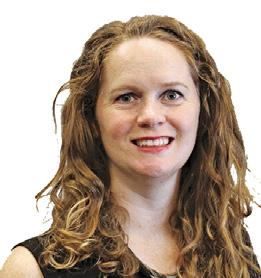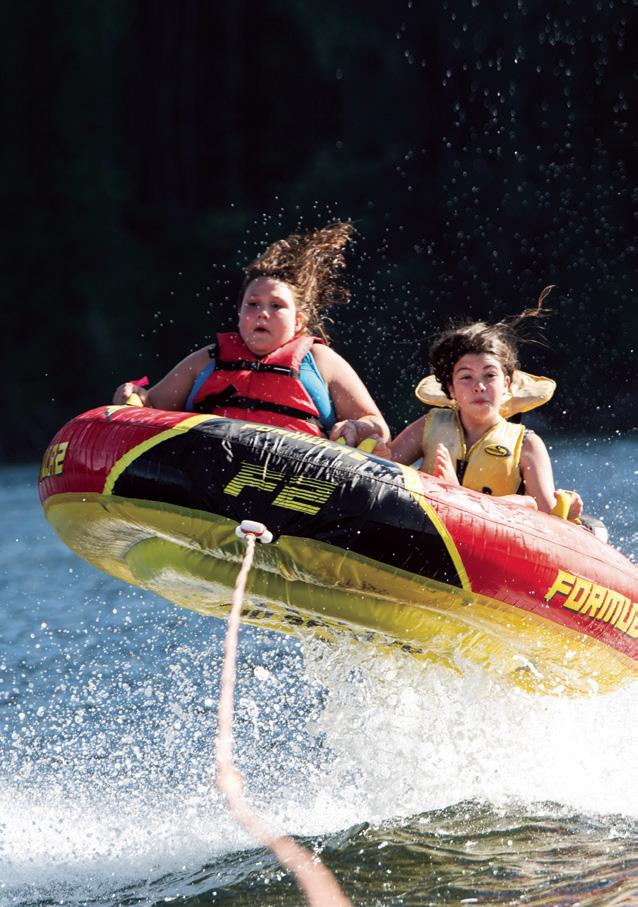Spring Into Action

The BIG Feelings Era
Tips for the Sandwich Generation

















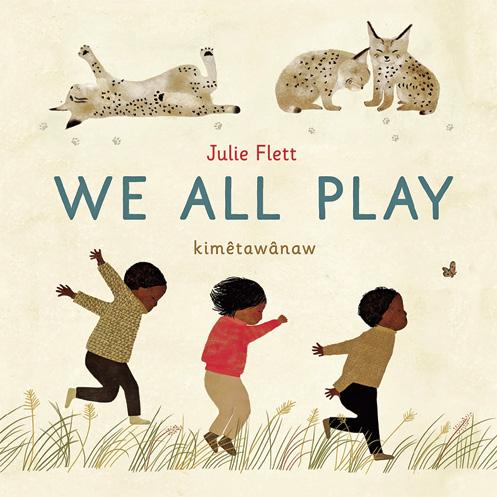






































Spring is a time of new beginnings!
The weather is getting warmer, the sun is sticking around longer each day and plants are sprouting.
It’s time to take a page out of Mother Nature’s book, shake off our thoughts of hibernation and spring into action!
Children are naturally active and creative so we can learn a lot from them. Let your little one take the lead and show you how they would like to get active this season.
Go on a scavenger hunt, fairy walk, get down and dirty in the garden, explore a new park, go for a hike, get pumped on your bikes, plan a picnic or see how far you can go while hopping like a bunny.
As adults, we tend to overthink things and as hard as we try to stay open minded, it can be easy to get stuck in our ways. We can get cold and stagnant in our thinking—like winter. When you are looking for fresh ideas of things to do, ask your kids what outdoor activities they want to take part in—and do them. Let them be your shiny sun, your blooming flower, the spring in your step!
Go camping, watch a movie in your backyard, walk to a

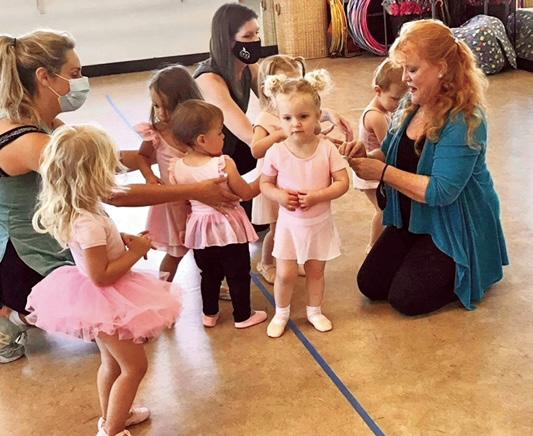

playground—backwards, play hopscotch, pick your favourite foods from a local garden, blow bubbles, visit a waterfall… Let their creative juices and energy flow. Be open to their imagination.
Being active has countless benefits including improving your mood, helping you stay in shape, better sleep, boosting your energy and elevating concentration. So getting out with your kids and getting your body moving is a win-win!
But the biggest benefit of getting active with your family might be spending time together. No matter what activity you choose, allowing your child to lead the way and spending time with them doing something they love will brighten both of your days more than the warmest spring sunbeam ever could.
– Stacie Gaetz


Learn more about the lands we live and work on with this useful app. Native Land Digital strives to help people learn about Indigenous ways of knowing, and the history of colonialism through various educational resources. View maps and access your area’s Territorial Acknowledgement Guide. Individuals, groups and teachers will all find useful resources for helping everyone move forward together. native-land.ca


From Thursday to Sunday from noon to 6pm, visit SUPPLY Victoria in downtown Victoria to mingle with an inclusive arts community while you shop for sustainable and affordable art materials. Donations of various art supplies are always welcome in the hour before they open. Redirecting art supplies from the landfills and into the hands of talented artists was the motivation for this shopping hub, which also offers workshops and regular events. supplyvictoria.ca
Playground Buddy was developed in Victoria by parents who had energetic kids who loved playgrounds. This free app shows up-to-date features, pictures and anything else you need to know about playgrounds in your area. And no, it’s not just for Victoria— Playground Buddy now boasts a directory of 400,000 playgrounds in 170 countries, so it’s also great to use while you’re travelling! playgroundbuddy.com
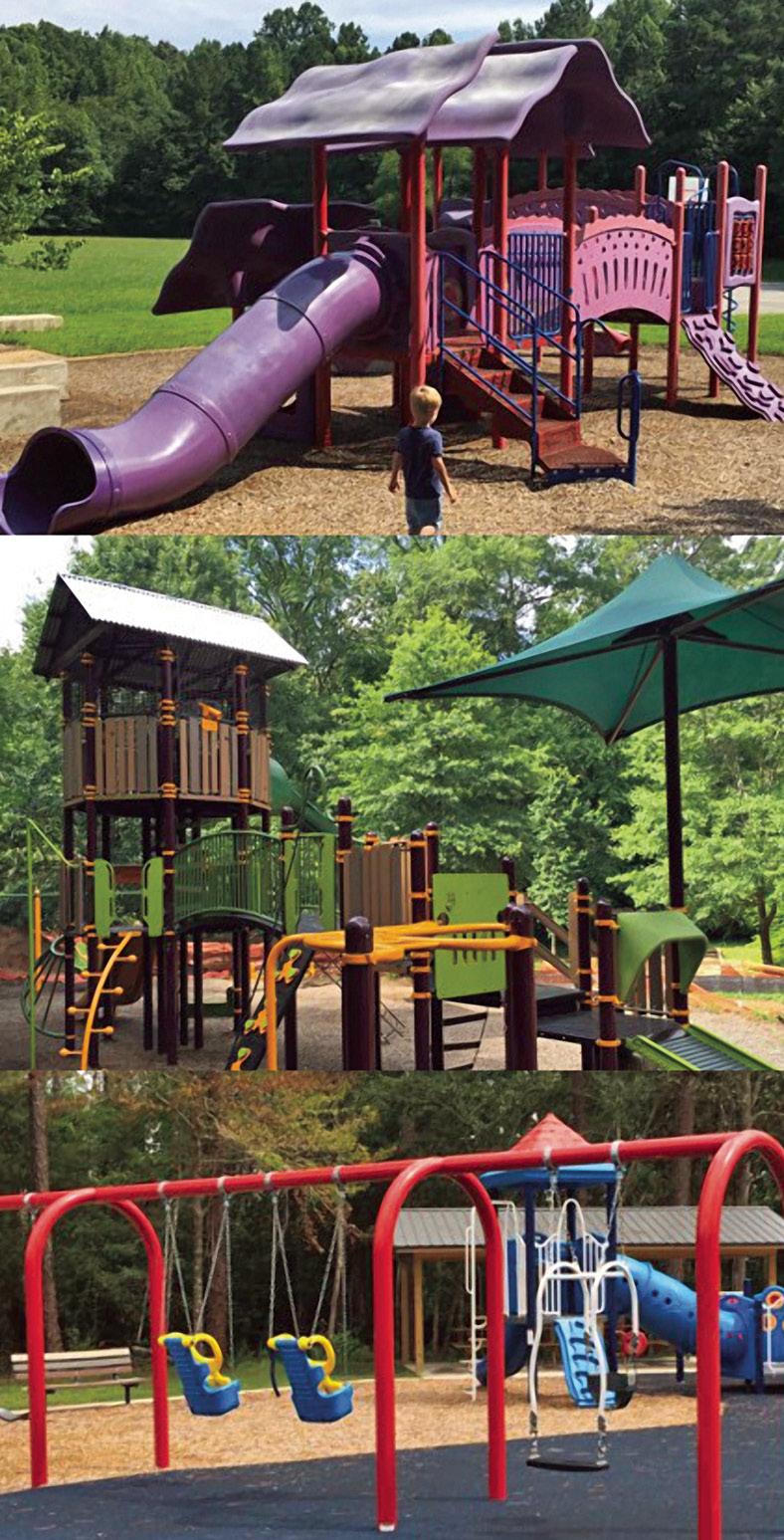
I am proud to continue my support of parents, families and youth in Oak Bay-



* July & August weeks
* all kids aged 5 to 13


This therapeutic family-run hobby farm is located just outside of Victoria and offers a great way to connect yourself with both the animals and the land. They offer birthday parties, group tours and a variety of other experiences.
Visit their ponies, donkeys, Nigerian goats, fainting goats, sheep, bunnies, chickens, hens and a rooster and take a break on their luscious lands. bearnbeefarm.com
Cybertip Canada aims to provide valuable resources to parents and young adults on how to keep themselves safe online as well as in everyday situations. Learn how to prevent today’s largest risks and have a safe place to report any incidents. Sign up for their alerts to get important information and resources sent directly to you using age-appropriate terms. cybertip.ca


In 2014, Melissa Labelle turned her basement into a soap-making factory using only fair trade and ethically sourced ingredients. Ten years later, she is a fixture at the Esquimalt Market and is selling a wide variety of natural bath and body products, accessories and unique greeting cards online and in several stores in Victoria and beyond. wychburyave.com
Since 2013, Taylor Kennedy has been an international award-winning craft chocolate maker in Victoria. He works directly with farms to pick the best cocoa beans he can roast and develops them into the finest quality, most delicious chocolate available. You can find Sirene Chocolate in many stores across Vancouver Island or have it shipped directly to you.
sirenechocolate.com
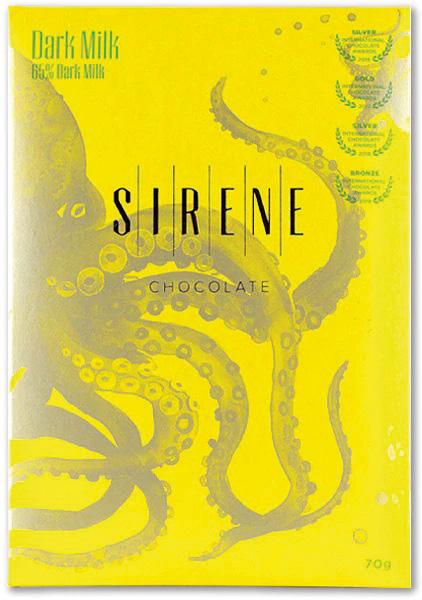
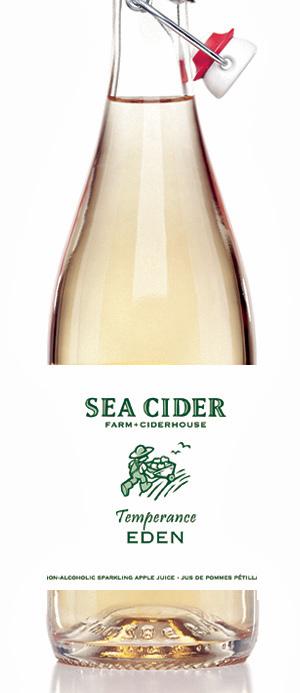
The award-winning SeaCider Farm and Ciderhouse in Saanichton now offers an incredible Temperance Series for those who want to indulge in a non-alcoholic treat. Currently available in three luxurious flavours, a portion of all proceeds helps support wellness programs in Canada. You can find SeaCider products at local stores in BC, as well as in other parts of Canada, or order online. seacider.ca








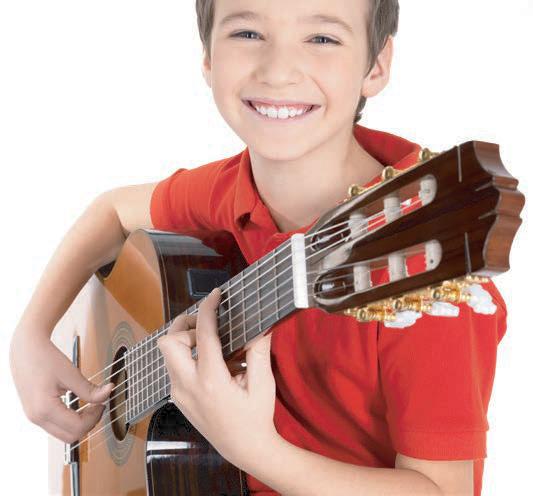



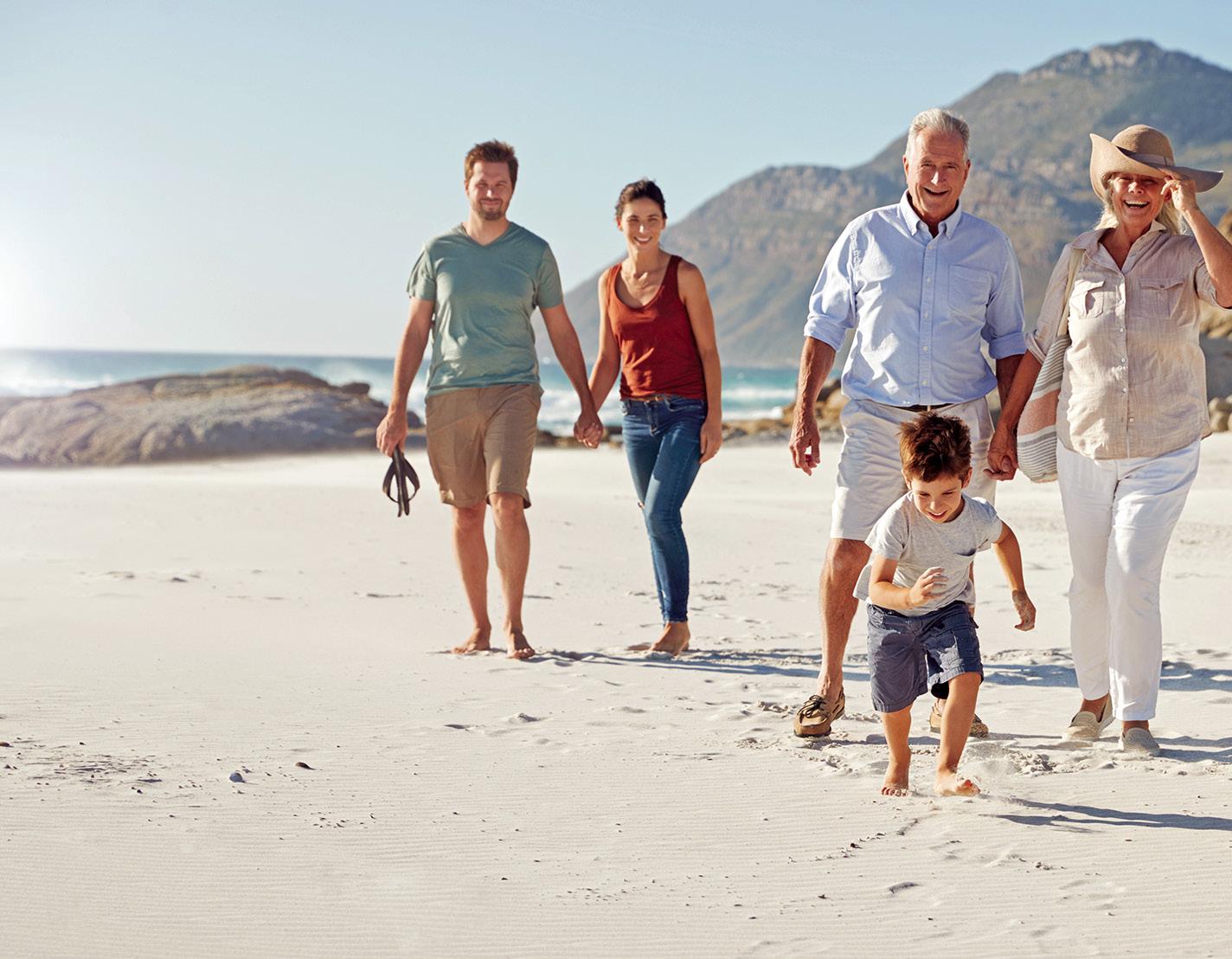
An increasing number of my friends find themselves in the challenging position of simultaneously caring for both their children and aging parents—the sandwich generation. I’ve witnessed close friends juggle responsibilities, from picking up their children to rushing to ensure their parents are taking their medications and maintaining their households.
These situations are challenging on their own, and they become even more taxing when parents are also navigating the tumultuous teen years in today’s complex parenting landscape, leading to elevated stress levels.
Stress, in turn, makes it challenging to self-regulate, which involves maintaining composure under pressure and refraining from raising one’s voice.
At MindKey Health, our team shares a powerful mantra with parents: “We must always share our calm, not amplify our children’s chaos.” (I must note that the original quote is by LR Knost: “When little people are overwhelmed by big emotions, it’s our job to share our calm, not join their chaos.”
Balancing the duties of raising kids and taking care of aging parents, which is a unique challenge for the sandwich generation, can be difficult and emotionally draining. Staying calm while handling both roles is tough but commendable. To help you do this and follow the advice of sharing calm, here are nine practical tips for you to consider:
Cultivate a proactive mindset by anticipating potential challenges and addressing them before they become overwhelming. Establishing routines, organizing tasks and creating a comprehensive care plan for both generations can provide a sense of control and predictability, alleviating stressors.
Dedicate intentional time for self-care activities that rejuvenate your mind and body. Whether it’s a few minutes of
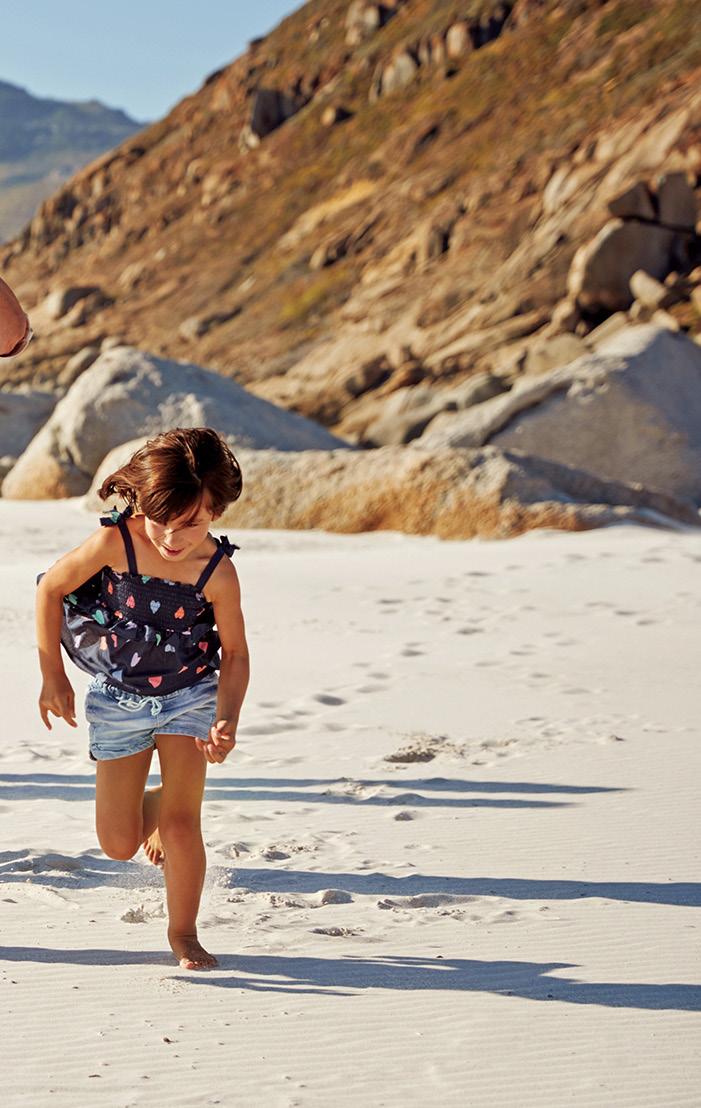
meditation, a brisk walk or engaging in a hobby, prioritizing self-care is crucial for maintaining resilience and preventing burnout.
Clearly define and communicate boundaries to prevent burnout. Understand your limitations and learn to prioritize tasks. Setting realistic expectations for yourself, your children and your aging parents helps create a manageable routine, reducing the constant pressure that can contribute to stress.
Acknowledge that you can’t do everything alone. When it comes to your children, don’t hesitate to reach out for help. Establish connections with the parents of your child’s classmates and build a support network. Request assistance in picking up your child from school or accompanying them to extracurricular activities when your attention is required for your aging parent. Shared responsibilities can alleviate some of the daily pressures.
Recognize the impact of a clutter-free and well-maintained home on your mental well-being. Even if it’s only once a month, consider hiring a house cleaner. Outsourcing this responsibility can provide you with valuable time for self-care and reduce the mental load associated with household chores.
Streamline your daily routine by stocking your freezer with easy-to-make dinners from convenient sources. Preparing and freezing meals in advance can save you time and energy, allowing you to focus on the immediate needs of both your children and aging parents without compromising on nutrition or resorting to last-minute meal solutions.
Embrace the convenience of grocery and meal delivery services like Instacart, DoorDash and Skip the Dishes. This not only saves you the time spent navigating crowded grocery stores but also ensures that your household remains wellstocked with essentials. Simplifying the grocery process contributes to a smoother daily life.
If you have a child with special needs, take the time to understand and utilize available resources. Investigate the Disability Tax Credit, Home Owners Grant Disability Tax Credit and Respite Services like those offered at the Cridge Centre. This knowledge empowers you to provide the best possible care for your child, reducing stress and fostering a sense of support.
In caring for aging parents, explore proactive and personcentered healthcare options tailored for seniors. Organizations like Monarch Health offer services that prioritize the well-being and comfort of elderly individuals within the familiarity of their own homes. Investigate these options to ensure your aging parents receive the care they need, easing the burden on your shoulders.
By implementing these strategies, you can create a more sustainable and balanced caregiving routine, fostering an environment where you can share your calm amidst the challenges of the sandwich generation. Remember, seeking and accepting support is not a sign of weakness but a testament to your resilience and commitment to the well-being of both your children and aging parents.
Dr. Jillian Roberts is a Professor at the University of Victoria, a Registered Psychologist and the Founder of MindKey Health. She is also the author of Calm, a soothing board book to remind us that the little people in our lives need us to be their calm.


Recently, when I asked the students in a Grade 8 class how things were going for them in their last year of middle school, one of the students sighed loudly and said, “Okay. You know, it’s okay.”
When I asked them to expand on what they meant by “Okay,” the student replied, “I dunno know, there’s just some BIG feelings going on right now and growing up feels like a lot!”
Most of the other students nodded or smiled knowingly in agreement. As a sexual health educator, I couldn’t have said it more articulately—growing up is a lot! In Taylor Swift terminology, adolescence is the BIG feelings era and as parents, educators, allies and champions of youth it is our job to support them as they find their way through this era of “a lot.”
In 2024, collectively, we are doing a better job to prepare our young people
to understand the physical changes adolescence brings. It’s not uncommon now for students in our maturation classes to comfortably and, sometimes even, enthusiastically explain the role of hormones, spontaneous erections and period products during puberty to the rest of their classmates. And yet, when it comes to the emotional changes ahead, students are often less sure of the changes to feelings especially for those kiddos who haven’t had the opportunity to witness older siblings plow through ahead of them. This means, of course, it’s essential that we, as their trusted adults, help show them the way through using observation, empathy and time away.
Observe the changes your youth are going through from the emotional and social perspectives. Are they spending more time doing things than they used to; are they hanging out with differ-
ent friends; or are they dressing more creatively? Use these observations to offer comments like “I’ve noticed that you’re really into shooting hoops these days, how’s it feeling?” or “I notice that you’re talking about some new friends—what has it been like to make new friends?” This helps youth to form connections between their actions and feelings, which they may not be aware of.
As you prepare dinner, drive to dance or walk the dog together and they’re venting about a math test, explaining the latest friend drama or intermittently grunting in response to your questions, listen closely to not only what they’re saying (or not saying!) about their feelings but how they’re saying it. Acknowledge youth’s feelings by responding with empathy. This tells them that you’re focused on their feelings, and they know that you’re not judging their
feelings, just supporting them. This approach will remind youth that while you might not “get it,” you’re 100 percent willing to try.
When their words and/or actions show you that they’re going full speed ahead through these feelings, create strategies together to take time away from all of the changes. Chat with them about what makes them feel better— when do they feel the most relaxed and like themselves? Is it playing with the dog? A T. Swift dance party, painting, mountain biking, zoning out with their
favourite playlist or binge-watching Friends? Help them find the time to step away from life’s big moments and feelings. This will put these feelings into perspective without minimizing or ignoring them. It gives them time to reconnect to themselves.
There’s no doubt that growing up in this fast-paced world feels like a lot for our youth and even for us adults on the sidelines. It is our job to show them that even though things feel like a lot, there are ways through the BIG feelings era with curiosity, empathy and connection.
Jennifer Gibson, MA, is also known as “The Sex Lady”—for close to 20 years in Greater Victoria!—to the thousands of amazing youth and adults she is lucky to educate and learn with through her job as Coordinator of Community Education at Island Sexual Health. She’s passionate about making sexuality education as positive, fun and non-cringe-able as possible.

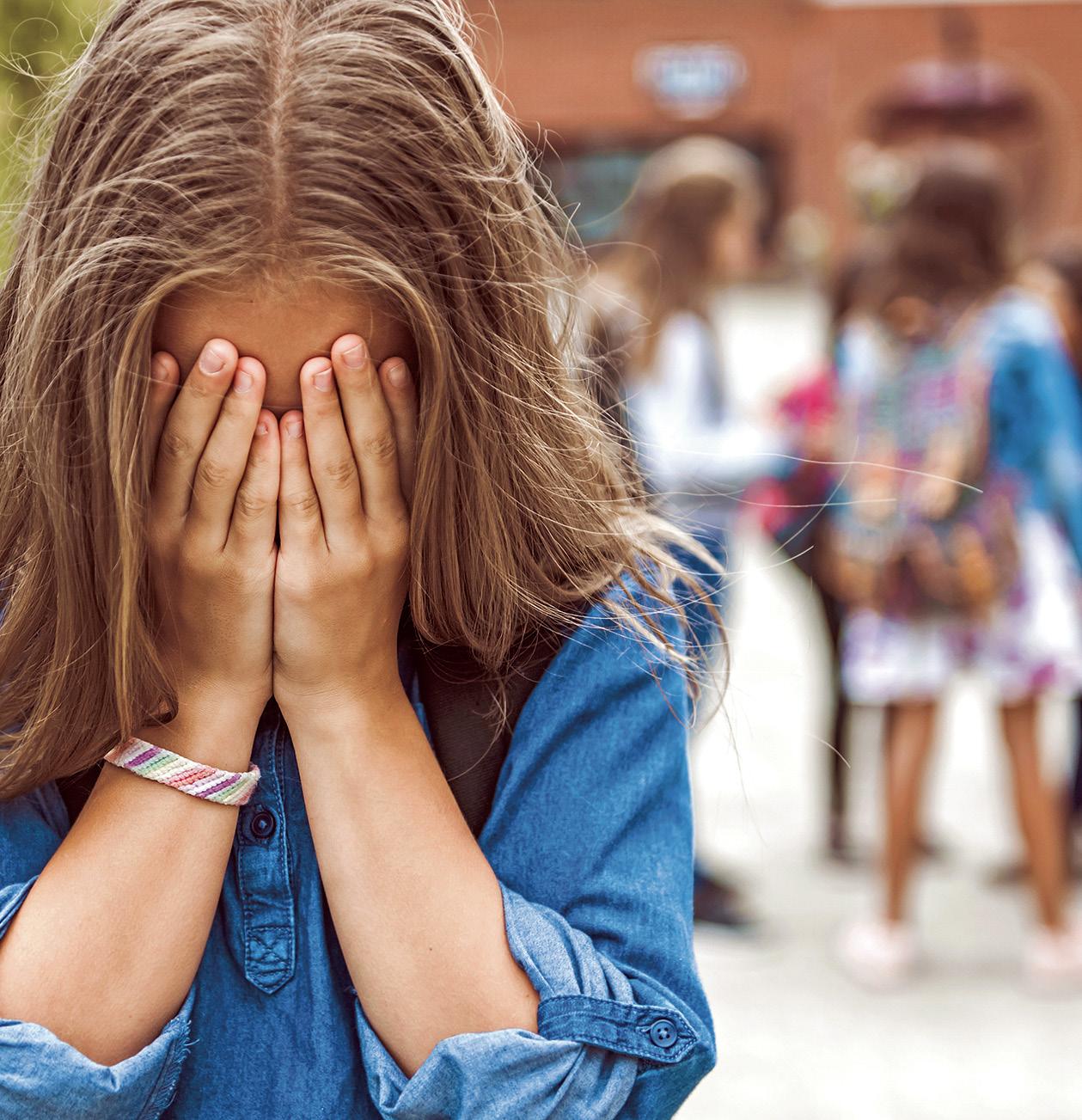







As I brush my teeth at 2am, I see something out of the corner of my eye. I feel like I am in a Stephen King novel. A single adult louse is crawling along a strand of hair on my bathroom floor. It reaches the end of the hair and then just sits on the floor. I grab my lint roller and whack it, like Whack-a-Mole. I lint roller my entire floor. I put the lint roller sheets in the garbage, tie up the bag and then walk it outside to the can. There is no such thing as being too careful. You are supposed to treat everyone in your house at the same time with the lice shampoo, but there are five of us and only so many hours in the day. So far three of us are infected and the
She bursts into tears. I hug her. I’m terrified, angry, and on the verge of tears myself. I run her a bath (not that this is going to kill them, but at least it will contain them. Even the chlorine in a swimming pool doesn’t kill them). I can picture them all over the living room carpet and couch. I imagine our house being fumigated and lice taking it over. I think back to that Goosebumps TV episode where giant lice infest the school. We need a special treatment shampoo. I chat to my lice expert friend on speaker phone while driving to Superstore. I feel as if I have failed to protect my children, but she reassures me that it has nothing to do with hygiene and lice are treatable. They
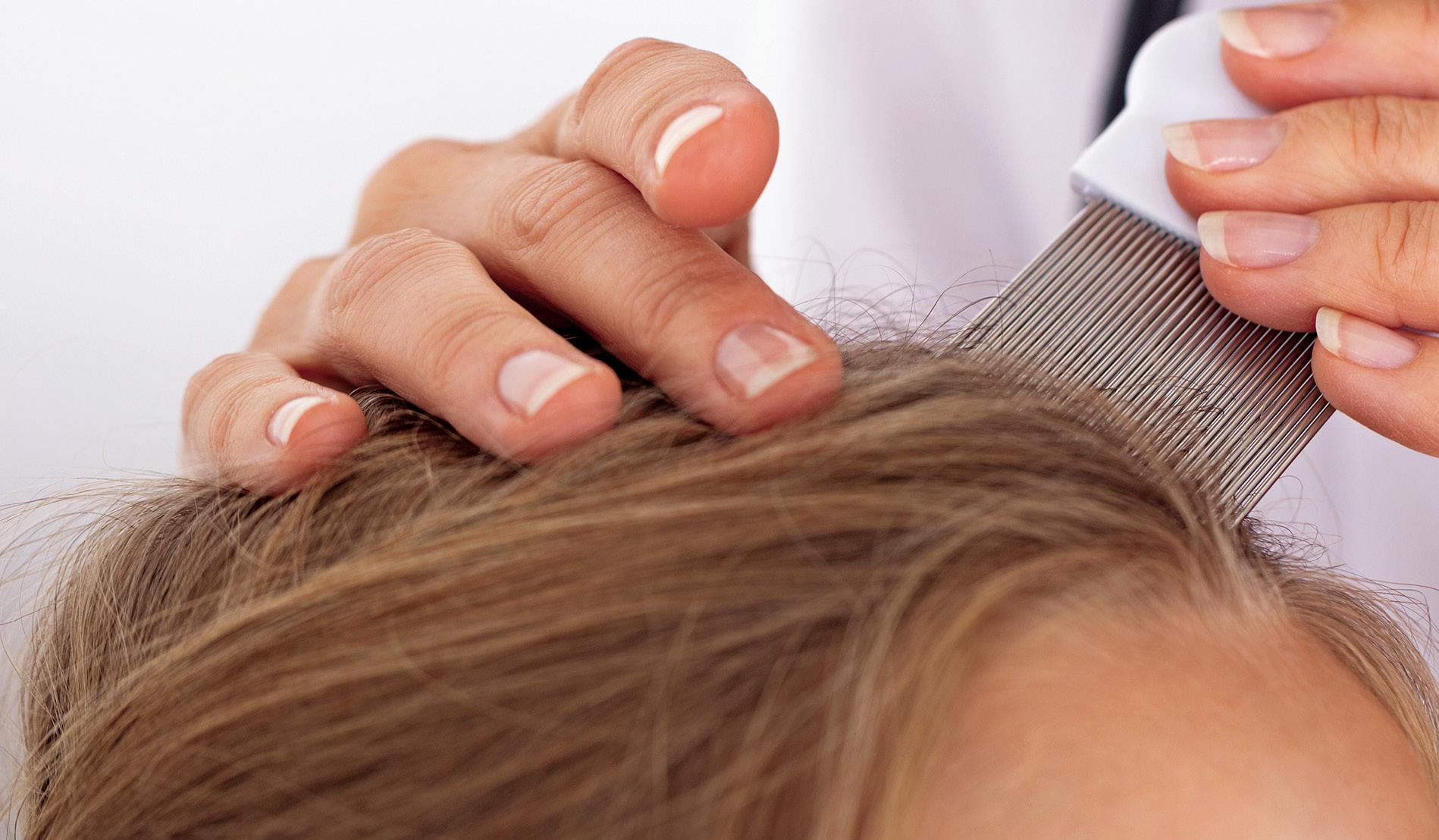
other two family members seem fine, but is it only a matter of time?
Let’s rewind the horror movie by an hour. As I was trimming my daughter’s nails (with my headlamp on so I could see in our dark living room), she kept scratching right at the base of her neck. I flash my headlamp on her hair and gasp.
“What?” she asks.
I continue to flash the light and watch half a dozen dark lice scamper around her head. One crawls out onto her forehead, and I pick it off. Two days ago, I thought I picked a fruit fly out of her hair, but now I know what it was.
I respond honestly: “Umm, you have lice.”
exist. They feed on our blood. It’s surprising that I have made it through 40 years of my life without having lice.
I manage to get my daughter to sleep by midnight (after applying the treatment, combing out a ton of adult lice from her head, changing her sheets and then vacuuming). I check my head; of course, I am infected too. I treat myself and then fall into bed.
The next morning, I wash out my daughter’s treatment and comb her hair one more time before school. She’s going to be a zombie but insists on going to school. I drag myself to my home office and connect to my online work meeting. I’m wearing my rubber ducky robe and shower cap because I am erring
on the side of more treatment soaking time. My boss says: “What, no video? You’re always on video.” I describe my attire and state. I receive empathetic comments as my coworkers describe their own personal lice horror stories.
Fast forward to the next evening. I’m hugging my son good night at 9pm and counting the minutes until I can crash. I spot something on his pillow. I get my headlamp and I see eggs clinging to the front strands of his hair. He is freaking out, but I decide to go the science route to help calm him. I stick the louse under his pocket microscope and turn on the tiny light.
I treat my son. Over time I re-treat my daughter and myself again. Then we repeat the entire process and double treatments again in April. The sequel begins. Either we didn’t get rid of them all or we were re-contaminated. Either way, I don’t enjoy where all my spare time and thoughts are spent.

For the rest of the school year, I continue to condition all three of our heads once per week and comb through our hair with a lice comb. Finally, by the summer, we’re safe. We’re lice free. I stop my weekly deep conditioning and combing. My oldest daughter and husband have still never had lice to this day. One year later, I still check everyone every Sunday because we don’t want to star in a trilogy.
Serena Beck works full-time as a Technical Writer. She loves to write, travel and swim at the beach with family and friends.
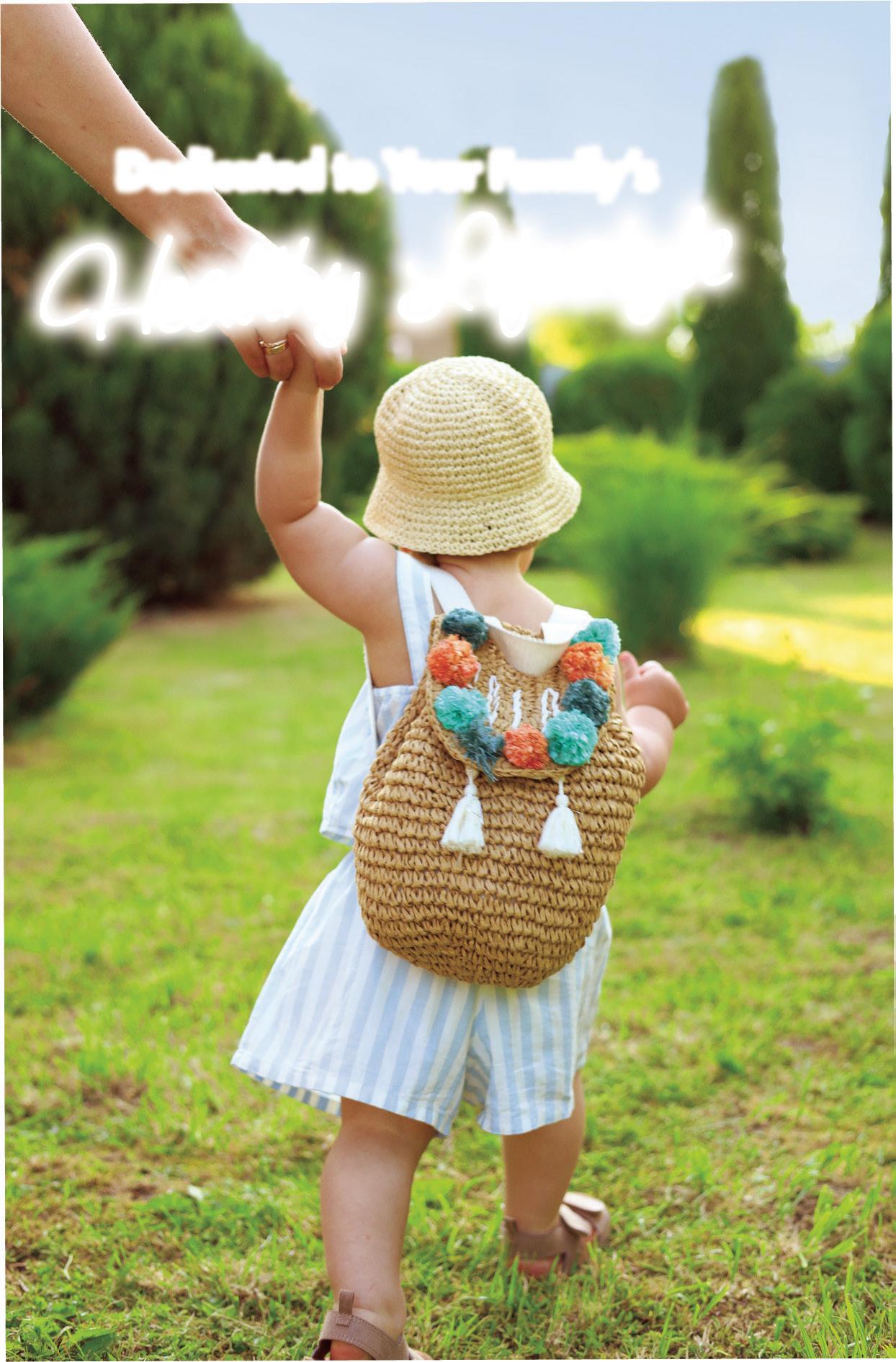
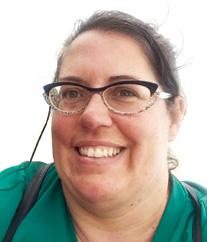

Is your teen ready for a summer job
but you would still like them to spend some time outdoors being active? Did they love summer camp as a child? Are they great with younger kids?
What better way to spend the summer than as a camp counsellor!
This will teach them responsibility, allow them to gain independence and give them the opportunity to earn their own money.
Here are eight reasons to encourage your teen to consider becoming a camp counsellor this season.
What could be more active than chasing kids around a campsite all day? Your teen will be kept on their toes (literally) at camp with long days on their feet.
Their duties might include managing hiking, swimming, sports and other activities with the kids.
There won’t be many moments to rest but that just means more fun!
Training to become a camp counsellor can be quite extensive. Your teen might learn CPR, first aid, swim safety and other important skills. Once they are on the job, they will naturally learn things like time management, public speaking and leadership while in this role.
It will even get them back to the basics like making sure they wake up on time, making their bed, eating on a schedule, making their own food, keeping their living space clean and maybe even doing their own laundry.

Becoming a camp counsellor automatically puts your teen in the position of a leader. Knowing they oversee what the day looks like for children younger than they are gives your adolescent a sense of power and confidence that they may have never had before.
Teens tend to rise to the occasion when they are given the independence they so desperately crave. Then, before they know it, they have done things they never even thought they could, like helping two campers resolve a conflict.
Does your teen need a “digital detox?” There is no better place to get away from the screens than a camp where phones are forbidden (or limited/ scheduled).
The best part? It isn’t you nagging them to put down the tablet or turn off the videogames all day!
Working as a counsellor at a camp looks great on a resume but it also teaches real-life employment skills that you don’t usually find on paper. Working with other counsellors, they will learn what it is like to deal with fellow employees with varying opinions and backgrounds.
They will have a supervisor that they will build a relationship with and will learn how to lead and manage a team (of rambunctious kiddos).
What does your teen love? Are they an artist? A sports star? An animal lover? Being a camp counsellor allows them to share their interests and talents with other kids. It gives them a chance to become a role model and may even reignite a passion they had when they were younger.
Nothing is more motivating than being seen as the expert at something. Teens often connect with younger kids in a way adults can’t, and this can help them open the door to new opportunities that the children at camp may not have experienced otherwise.
If you talk to an adult that went to camp as a kid, chances are they have at least a few memories that stand out to them from that time. Maybe they met their best friend at camp or that’s where they learned they had a knack for teaching, and it helped start them on their career path.
No doubt your child will come home with more than a few stories of the awesome things they experienced this summer.
In my opinion, this is the biggest benefit to your teen being a camp counsellor.
We don’t have to tell you that being responsible for people younger than you is hard work. Your teen will learn what it is like to teach, guide, care for and schedule children that depend on them. All the things you have been doing for them since they were born. Don’t be surprised if they come home to give you a great big hug and thank you for all you have done.
If you think your teen is ready to take the leap into the employment world this summer, becoming a camp counsellor may be the perfect fit for them. Learn more and check out some counsellor opportunities at bccamping.org
Stacie Gaetz is the managing editor of Island Parent Magazine and the proud mama of a delightful daughter and silly son who fill her days with love and chaos. Reach her at editor@islandparent.ca.

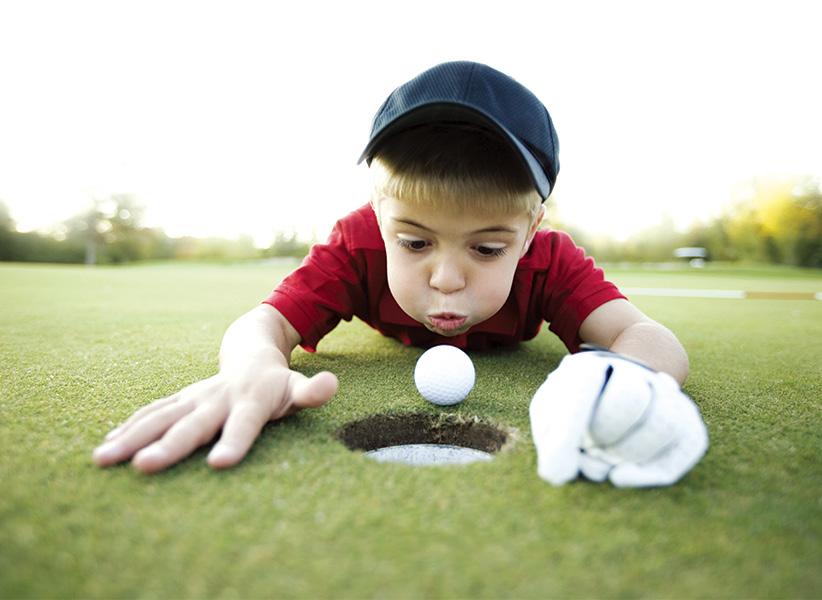


In this day and age, where technology often dominates our lives and educational systems tend to prioritize standardized learning, the importance of fostering creativity in children cannot be overstated. It is crucial to provide opportunities for children to explore their imaginations, express themselves and develop essential life skills.
Theatre, dance and other creative camps offer dynamic and enriching environments where children can unleash their creativity, build confidence and forge lifelong friendships. Let’s talk about why creative camps are the perfect choice for nurturing your artistic child.
1. Unleashes Their Imaginations. Theatre and dance are powerful ways to ignite the imagination. Through role-playing, storytelling and movement exploration, children are encouraged to think creatively and explore new worlds. In these types of camps, all children have the freedom to embody different characters, experiment with various styles of dance and express themselves authentically.
2. Builds Confidence. Standing on stage or performing a dance routine in front of an audience can truly be intimidating, but it is also incredibly empowering. Theatre and dance camps provide a supportive environment where children can take risks, overcome challenges and build confidence in their abilities. Through rehearsals, performances and constructive feedback from instructors and peers, children learn to trust themselves, embrace their strengths and push beyond their comfort zones. These experiences lay the foundation for selfconfidence and resilience in all aspects of life.
3. Fosters Collaboration. Theatre and dance are inherently collaborative art forms that require teamwork, cooperation and mutual respect. In camp settings, children work together to create performances, choreograph routines and support one another in rehearsals. They learn to listen actively, compromise and celebrate each other’s successes, which fosters a sense of camaraderie and belonging. These collaborative experiences teach children the importance of working together towards a shared vision—a skill that is essential in any professional or social context.
4. Develops Communication Skills. Effective communication is essential in both theatre and dance. Camp activities such as script reading, improvisation games and group choreography help children develop strong communication skills. They learn
to articulate their thoughts, express emotions through movement and collaborate with others to achieve common goals. These communication skills are invaluable not only on stage but also in everyday interactions and academic pursuits.
5. Cultivates Creativity. Theatre and dance camps provide a nurturing environment where children can explore their creativity and express themselves artistically. Whether they are designing costumes, experimenting with makeup and props or choreographing original dance routines, children are encouraged to think outside the box and unleash their imagination. These creative experiences foster innovation, problem-solving skills and a lifelong appreciation for the arts.
6. Celebrates Diversity. Theatre and dance are universal languages that celebrate diversity, inclusivity and cultural exchange. Camps bring together children from different backgrounds, cultures, abilities and experiences, creating a rich tapestry of perspectives and traditions. Through shared performances, collaborative projects and cultural exchange activities, children learn to appreciate and respect the diversity of the world around them. These experiences promote empathy, tolerance and global citizenship.
7. Leads to Lifelong Passions. For many children, attending a theatre or dance camp is not just a summer activity—it is the beginning of a lifelong passion. These camps ignite a love for the arts that can inspire children to pursue careers in performing arts, or other arts-related fields. Even if they do not choose a professional path, the skills, memories and friendships they gain from camp will stay with them for years to come.
8. Encourages Physical Activity. Dance camps offer a fun and engaging way for children to stay active and healthy—often without them even realizing it! Whether they are practicing ballet, jazz, hip-hop or contemporary dance, children develop strength, flexibility and endurance. Dance also promotes cardiovascular health, improves coordination and enhances overall well-being. By incorporating physical activity into their daily routine, children develop healthy habits that can last a lifetime.
Erika Palmer is a writer living in Victoria with her husband and daughter. She believes most problems can be solved with a good cup of tea and a huge piece of chocolate.

What child doesn’t love stories and books about fairies, dragons, unicorns and the myriad of other fairy tale creatures? These stories excite, thrill and sometimes even scare the reader just a little bit, but most of all, they open a whole new world. One in which pixies stir up all sorts of mischief, a brave-hearted boy can tame an unruly dragon and a clever princess can outwit an evil witch.
Unfortunately, fairies and all their friends only exist in fairy tales. Or do they?
I’ll let you in on a little secret I’ve only told to a select few–there is a fairy village right in the heart of my community of Sidney!
Don’t believe me? Come and look for yourself. But don’t be discouraged if you aren’t able to spot it right away. You see, fairies are very clever, and they choose out-of-the-way places in which to dwell—under toadstools, in tree hollows and as it happens in Sidney, in the crevices of rock walls.
My young grandson and I have often visited this fairy village on our walks. It took us a while to notice it; we had to look closely, of course. After all, fairies and their friends are not always so easy to observe. There are many nooks and crannies in the rocks where they like to hide.
If you peer in these crevices though, you may be able to spot the doors and windows of their homes.
Please be courteous—if the “Fairies Sleeping” sign is out, be sure to tread quietly. If you’re really lucky, you may even see the fairy queen who sits on her throne presiding over the village with her magic wand. In that case, be sure to pay her homage with a nod, or even better, a slight bow as you pass by. (It is rumoured that she is particularly delighted by curtsies.) You’ll undoubtedly see her winged horse out and about as he often pays a visit to the other fairies.
As this fairy village has grown in recent years, the fairies have been joined by whole families of teddy bears and gnomes who love to have tea parties in their gardens on a sunny day. These gardens are very well-tended as everyone knows gnomes are excellent gardeners.
A word of warning should you venture into this land—be sure to heed the “Beyond Be Dragons” sign. Don’t worry too much; these dragons are usually friendly. They’ve never been rude or given us a scare, but they are growing in number and could therefore be more difficult to control in the not-toodistant future. You know how dragons are. They’re an unruly lot, always trying to outdo one another with showy feats like breathing fire or changing the colour of their scales or practicing their terrible roars.
There’s truly something very special about a fairy walk, and it has to do with the fact that fairies don’t tend to dwell in one place for very long; it’s in their nature to always be on the move to that next adventure. So every time you walk by their village,
you can be assured of spotting something you haven’t seen before—a new group here or there (fairies can easily be distinguished by the colour of their wings), new dwellings that have seemingly popped up overnight or new friends who have come to pay a visit (we recently spotted a mermaid sunning herself on the rocks).
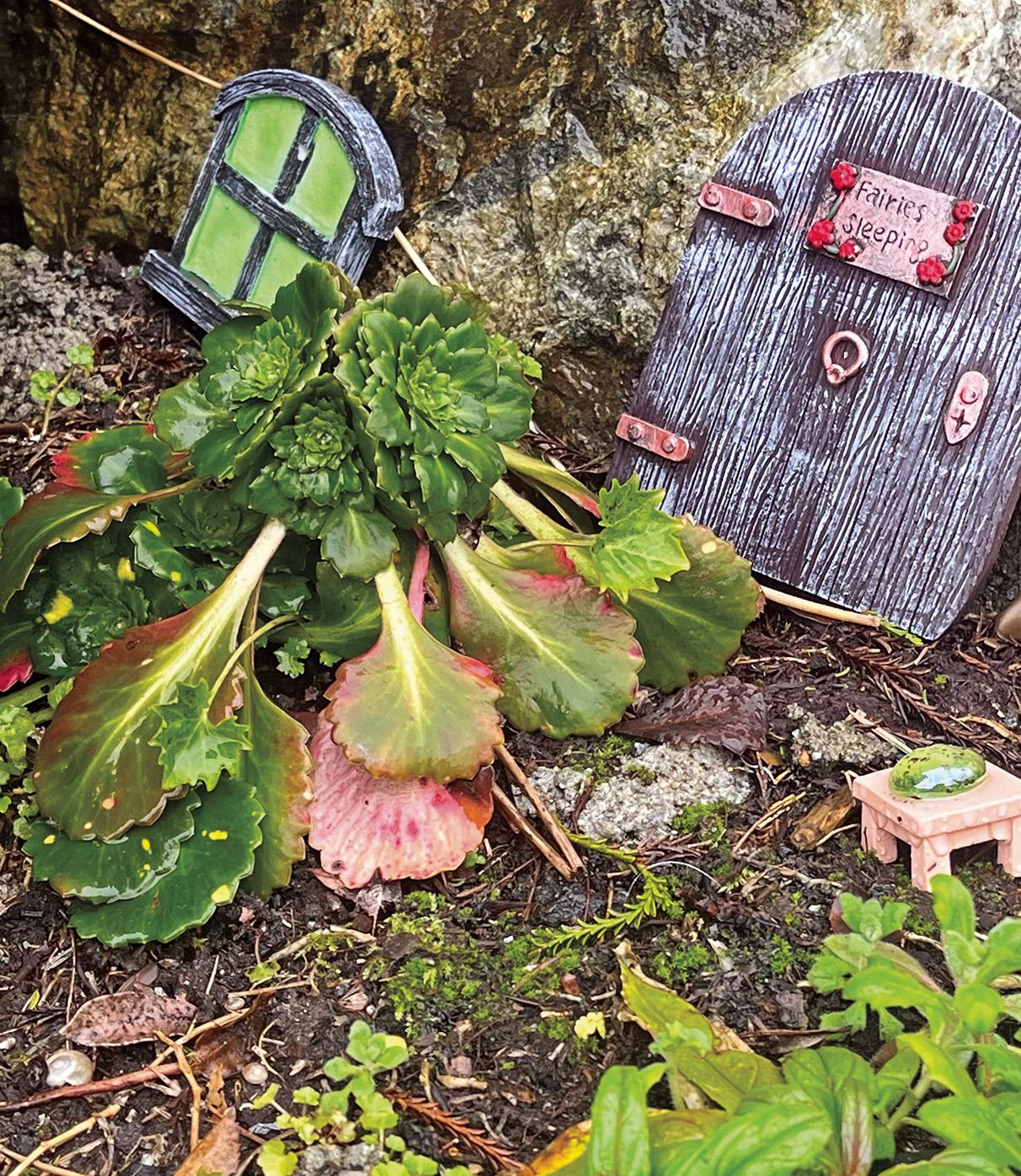
So, if your family finds itself out near Sidney, be sure to explore the beautiful waterfront walkway (hint, it’s in the vicinity of the marina), and in particular, the fairy walk where your little ones will be sure to spot a dragon or two.
Oh, and don’t tell the fairies I sent you. They enjoy children, but they’re not overly fond of adults; something to do with lack of imagination…
Susan Gnucci is a local author and proud “nonna” to three young grandchildren. She enjoys sharing her experiences as a grandparent.

Spring on the Island is ripe with sunshine, birds singing in the trees and flowers pushing up with blooms. It’s also the start of fresh leafy greens!
We are so lucky to have locally grown greens available to us nearly all year. However, spring greens are special. They are sweet and tender, full of flavour and so versatile. Here are some greens to keep an eye out for at the farmers’ market or a greengrocer with local food connections:
• Young leafy greens include kale, chard, mustard greens, arugula and more. Sauté young leafy greens with a bit of olive oil and a pinch of salt. They only take about five minutes to prepare.

• Flowering shoots from cabbage, kale or broccoli are tender and delicious. Serve them as an early spring substitute for asparagus. I like to braise them in a saucepan with a bit of butter and a few tablespoons of liquid. They will soften in less than 10 minutes.
• Spring nettle is a lot less stingy than older nettle. It often can be found in parks and public areas. Put on some rubber gloves and harvest your own. (For anyone in Victoria, check out the corner of Beacon Hill Park at Cook and Dallas.) Nettle needs to be well cooked to remove the sting. I recommend adding it to soups, stews, sauces or the risotto recipe below. Here are two simple recipes that feature spring greens.
Pasta is my go-to for a quick weeknight meal. It’s perfect for using up whatever is in our kitchen. This simple recipe features greens sauteed in garlic. Feel free to replace the leafy greens with braised flowering shoots. I’ve included ground nuts/seeds in this recipe to add a bit of protein. When you mix it with the cheese, your kids might not notice.
1 box of pasta (454g)
4 cloves of garlic
3 cups of fresh greens (kale, spinach, cabbage shoots)
2 tbsp olive oil
2 tbsp butter
1 tsp salt, to taste
1⁄2 tsp ground black pepper
1⁄4 cup of Parmesan cheese
1⁄4 cup ground almonds or sunflower seeds
1. Cook the pasta according to the directions on the package. To save time, prepare the greens while the water boils and the pasta cooks.
2. Finely dice the garlic. Wash and chop the fresh greens into bite-sized pieces.
3. Heat the olive oil and butter in a large frying pan. Add the garlic and the greens to the frying pan. Sauté until the garlic is cooked and the greens are wilted, about five minutes.
4. Mix the Parmesan cheese with the ground almonds/sunflower seeds.
5. When the pasta is cooked, drain the water, then toss the pasta with the wilted greens. Season with salt and pepper, to taste.
6. Serve the pasta with a sprinkle of the cheese and almond mix.
Risotto (Prep Time: 5 minutes, Cook Time: 30 minutes)
Risotto has the mystique of being fancy and complicated, but it’s actually a super simple one-pot meal. This recipe skips all the slow stirring found in other recipes. You only need to stir a few times during the cooking process to prevent it from sticking to the bottom of the pan. If you want to skip using wine, simply replace it with more stock.
1 onion
4 cloves of garlic
2 tbsp olive oil
13⁄4 cup arborio rice
1⁄2 cup of white wine
51⁄2 cups of stock
1 bunch of spring greens
1 tsp fresh lemon juice (save the skin for zesting)
2 tbsp butter
1⁄2 tsp salt, to taste
Zest from one lemon
1⁄2 cup of grated Parmesan cheese
1. Finely dice the onion and garlic.
2. Heat the oil on medium in a large pot. Add the onion and garlic. Sauté for two to three minutes, until the onion starts to soften.
3. Add the rice and cook for another minute, stirring to make sure the rice is nicely coated in oil.
4. Reduce the heat to low and add in the white wine. Stir well, then add in all the stock and stir again.
5. Put the lid on the pot and cook for 20 minutes. Stir three to four times during the cooking process to prevent any rice from sticking to the bottom of the pot.
6. While the rice cooks, thoroughly wash and chop the greens into bite-sized pieces. The rice should be nearly done after 20 minutes. Stir in the greens and lemon juice at this point, and cook for five to 10 minutes longer, until the rice is soft and the greens are wilted.
7. Remove from the heat and stir in the butter, lemon zest and salt. Taste it and add more salt as needed (the exact amount will depend on the saltiness of the stock).
8. Serve with freshly grated Parmesan cheese.

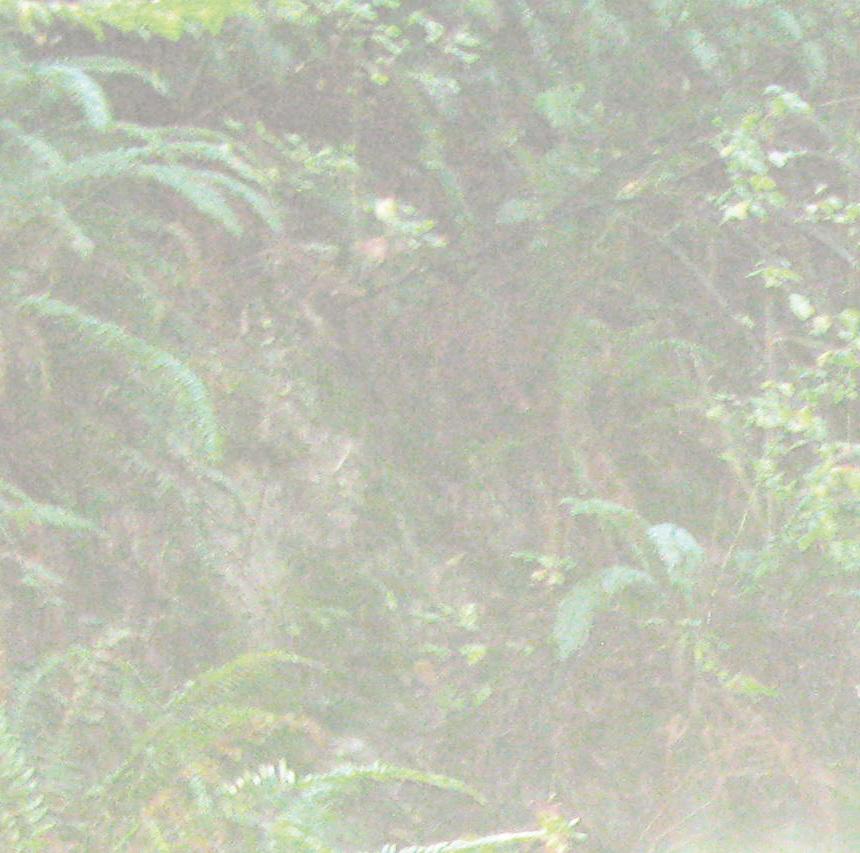





With spring break behind us, we are in the home stretch for school. Summer is right around the corner. But that’s almost worse, because many of us want to be outside in the warm sunshine, which can make listening to a teacher while sitting at a desk tough. That is why, for this month’s reading, I’ve chosen books that encourage us to get up and move or get outside.
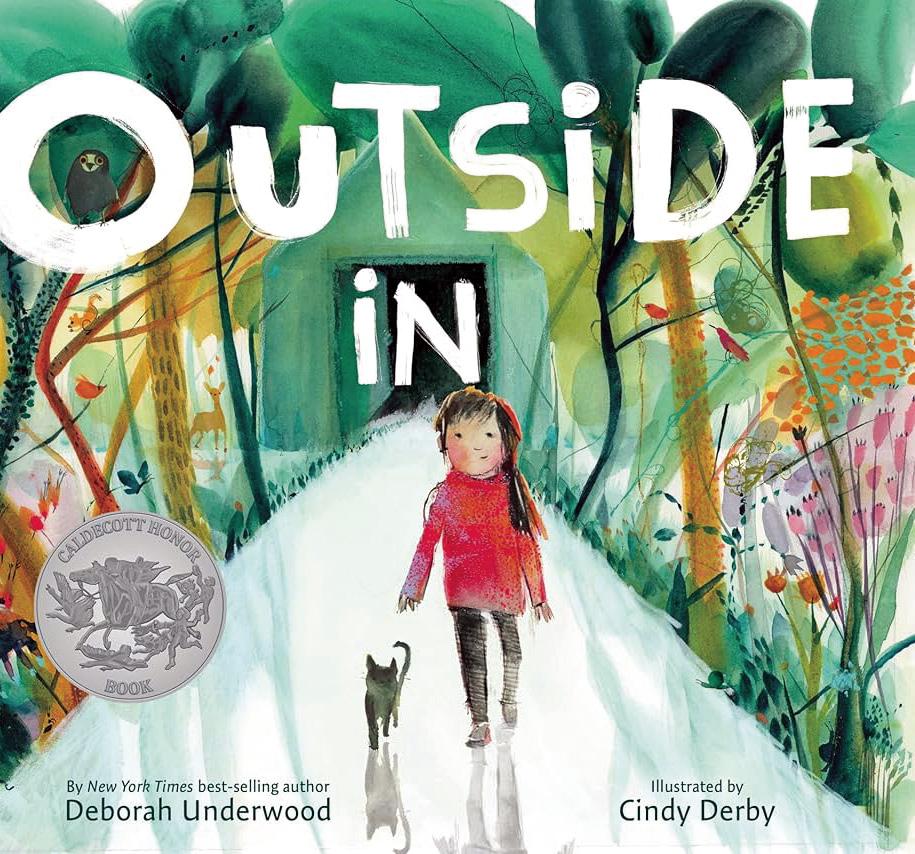
One of my favourite things about Victoria is seeing the cherry blossoms in the spring. There is such a magical and inviting feeling when you’re walking on a street with cherry blossoms raining down on your head. Outside In by Deborah Underwood and illustrated by Cindy Derby (Houghton Mifflin Harcourt, 2020), captures this emotion. And Derby’s paintings are gorgeous. The images add to the brilliant magic of Underwood’s words. And together they tease us with butterflies, sunbaked smells and chirps and rustles. After reading it, your kids will likely feel the pull to go outside and try to find a butterfly for themselves. For ages 4 to 7.
We All Play by Julie Flett (Greystone Kids, 2021) is just as whimsical. This story celebrates the different ways that people and animals move and play. Your kids can slip and slide, rumble and roll
along with the different animals Flett showcases. While this might seem like a strange idea, this could be a good book to read before bedtime. It’ll help your children get out any last wriggles before settling down to sleep, and Flett’s fantastic illustrations have a fairly muted palette, which brings a calming sense to the story in spite of the actions within the pages. Also, for those of you who are interested, We All Play is semi-bilingual. Meaning, not all the words are in two languages, but several Cree words are included in the story. And if you want to learn more, there are additional Cree words at the back of the book along with their translations and pronunciations. For ages 2 to 4.
The third book also encourages children to move, though in a different way. A Mermaid with No Tail by Jessica Long and illustrated by Airin O’Callaghan (Sounds True, 2023) is about a mermaid named Tatiana who, as the title suggests, is missing her tail fins. Undeterred, Tatianna decides that she wants to win the Mermaid Games. While A Mermaid
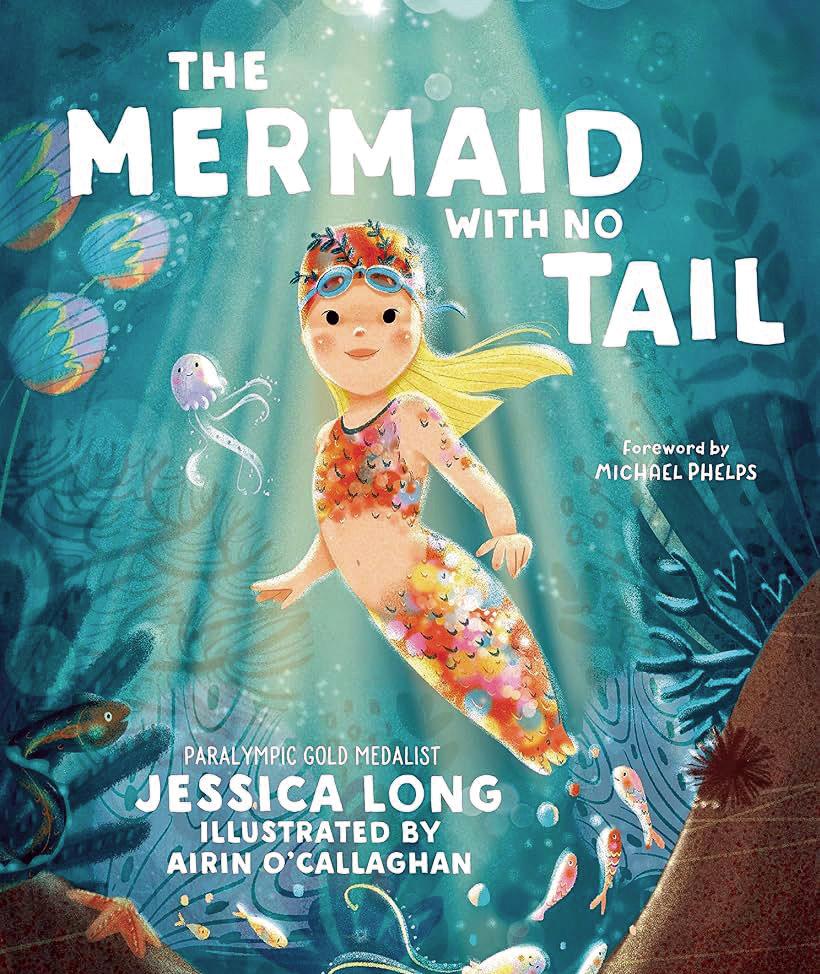
with No Tail is written as a fictional picture book with gorgeous illustrations, mermaids and a shark named Phelpsy, it is based on the life of its author, who has won 29 medals at the Paralympic
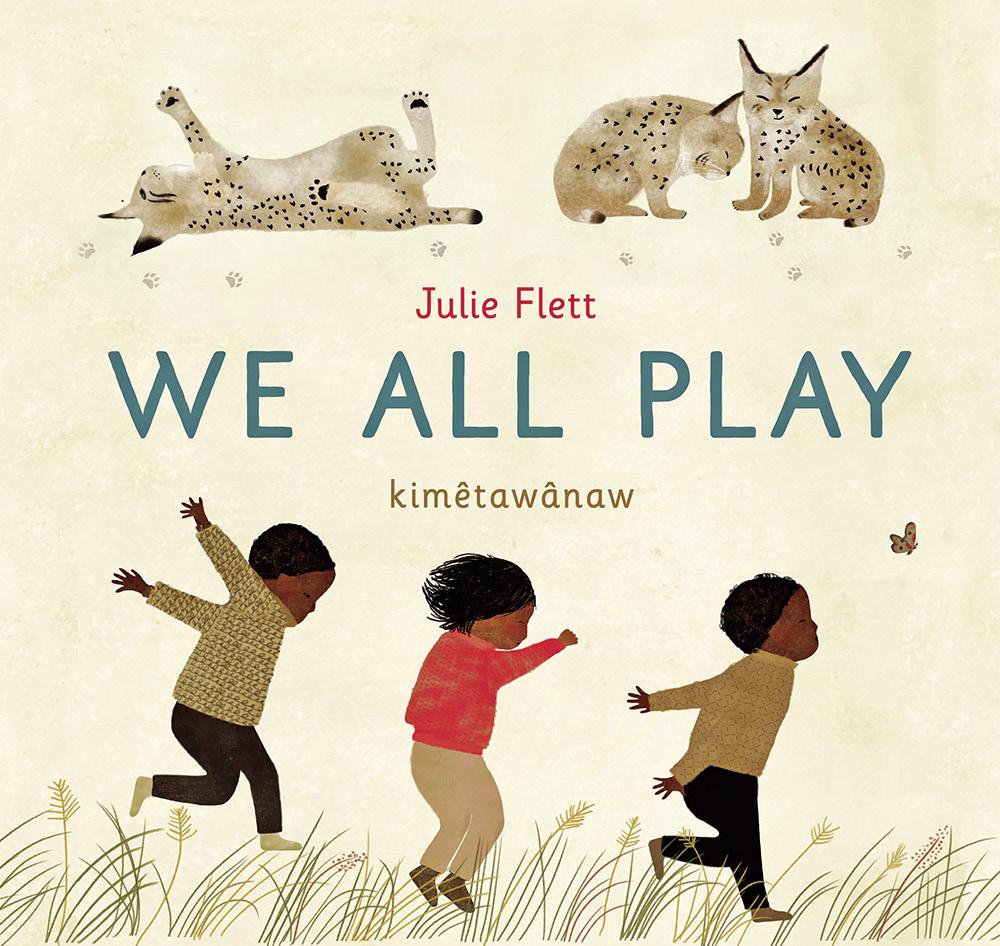

Games and more than 50 other medals at world championships. Her hope when she wrote this book was to help children learn that “the thing that makes you different is your greatest gift.” For ages 4 to 7.
Another book that encourages children and adults to move regardless of their age or ability is Ride Beside Me by Lucy Knisley (Alfred A. Knopf, 2024). This book, which is about a community cycling event, will be right at home in many island households. The story captures the joy and excitement of those events and shows how cycling brings people together. Who knows, maybe you could even bring this book with you to the next cycling picnic and share it with the other riders you meet. For ages 3 to 6.
The last book for this issue is Amy Wu and the Ribbon Dance by Kat Zhang and illustrated by Charlene Chua (Simon and Schuster Books for Young Readers, 2023). Amy Wu loves to move and then one day she sees a ribbon dance and it is magical, so she invites friends over for a ribbon dance party, but there’s just one problem: she doesn’t have any ribbons to dance with. Dance along with Amy as she tries to find something that will work. I love the colours and vibrancy in this book, and for those of you who want to have your own ribbon dance, there are directions in the back. For ages 4 to 7.
Five books that will hopefully encour-

age your children to get up and move, to believe in themselves, to get outside and to find joy in the little things. I hope you and your family get a chance to read at least one of these books and that you enjoy it as much as I did.
Christina Van Starkenburg lives in Victoria with her husband, children and cat. She is the author of One Tiny Turtle: A Story You Can Colour and many articles. To read more of her work and learn about her upcoming books, visit christinavanstarkenburg.com. Facebook: facebook.com/christinavanstarkenburg and Twitter: @Christina_VanS.

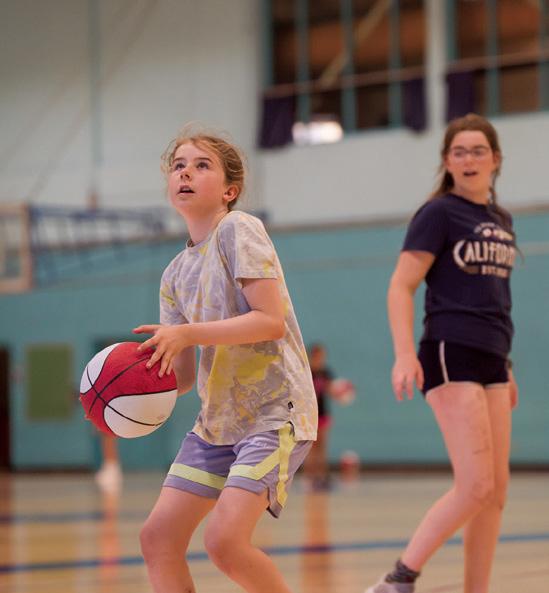
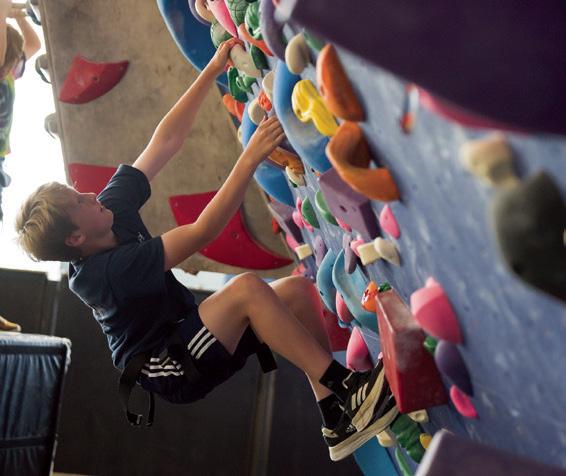
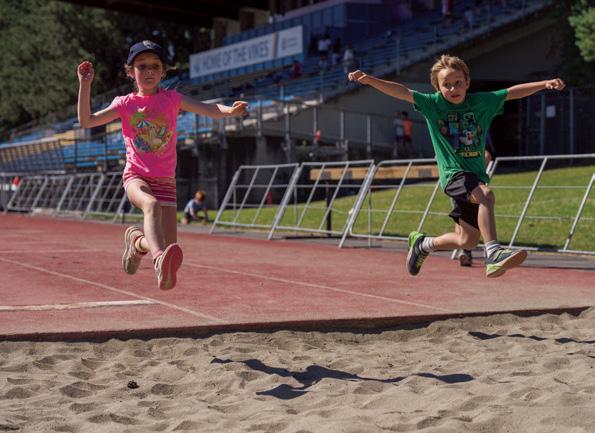



As the vibrant colours of spring start to unfold, it’s the perfect time to embrace renewal not only in our homes but also within our bodies. Just as we engage in spring cleaning to declutter and refresh our living spaces, our bodies also crave a gentle cleanse to shake off the sluggishness of winter.
As a holistic nutritionist, I invite you to explore the world of natural detoxification, focusing on nourishing foods, hydration and mindful practices that benefit you and contribute to the energy you need to care for your little ones.
Spring is a season of rebirth and our bodies naturally seek renewal. Over the winter months, we often indulge in heavier, comfort foods and our activity levels may decrease. This can lead to a build-up of toxins in the body, contributing to fatigue, bloating and a general sense of lethargy. A gentle spring cleanse can jumpstart the body’s natural detoxification processes, helping you feel revitalized and ready to tackle the demands of family life.
Incorporating nutrient-dense, seasonal foods into your diet is a cornerstone of a holistic spring cleanse. Load up on fresh fruits, vegetables and leafy greens rich in antioxidants and fibre. These foods not only nourish your body but also support liver function, a key player in detoxification. Consider adding vibrant berries, cruciferous vegetables and herbs like cilantro and parsley to your meals for an extra boost. Additionally, adopting a custom-made meal plan can alleviate the stress of planning and shopping. This not only streamlines your efforts but can also lead to cost savings by minimizing food waste and maximizing the use of seasonal, nutrient-dense items in your meals. This is something a holistic nutritionist like me can help you with.
Water is a powerful ally in the detoxification process. Adequate hydration helps flush out toxins, promotes healthy digestion and supports overall well-being. Infuse your water with slices of lemon, cucumber or mint for added flavor and benefits. Herbal teas, such as dandelion or nettle, can also contribute to your hydration goals while offering additional cleansing properties.
For couples planning to conceive, spring offers an opportune time to prioritize nutrition. A well-balanced diet can positively impact fertility, increase the likelihood of a healthy pregnancy and set the foundation for a robust immune system in the future child. Spring’s bounty provides a spectrum of nutrients crucial for reproductive health.
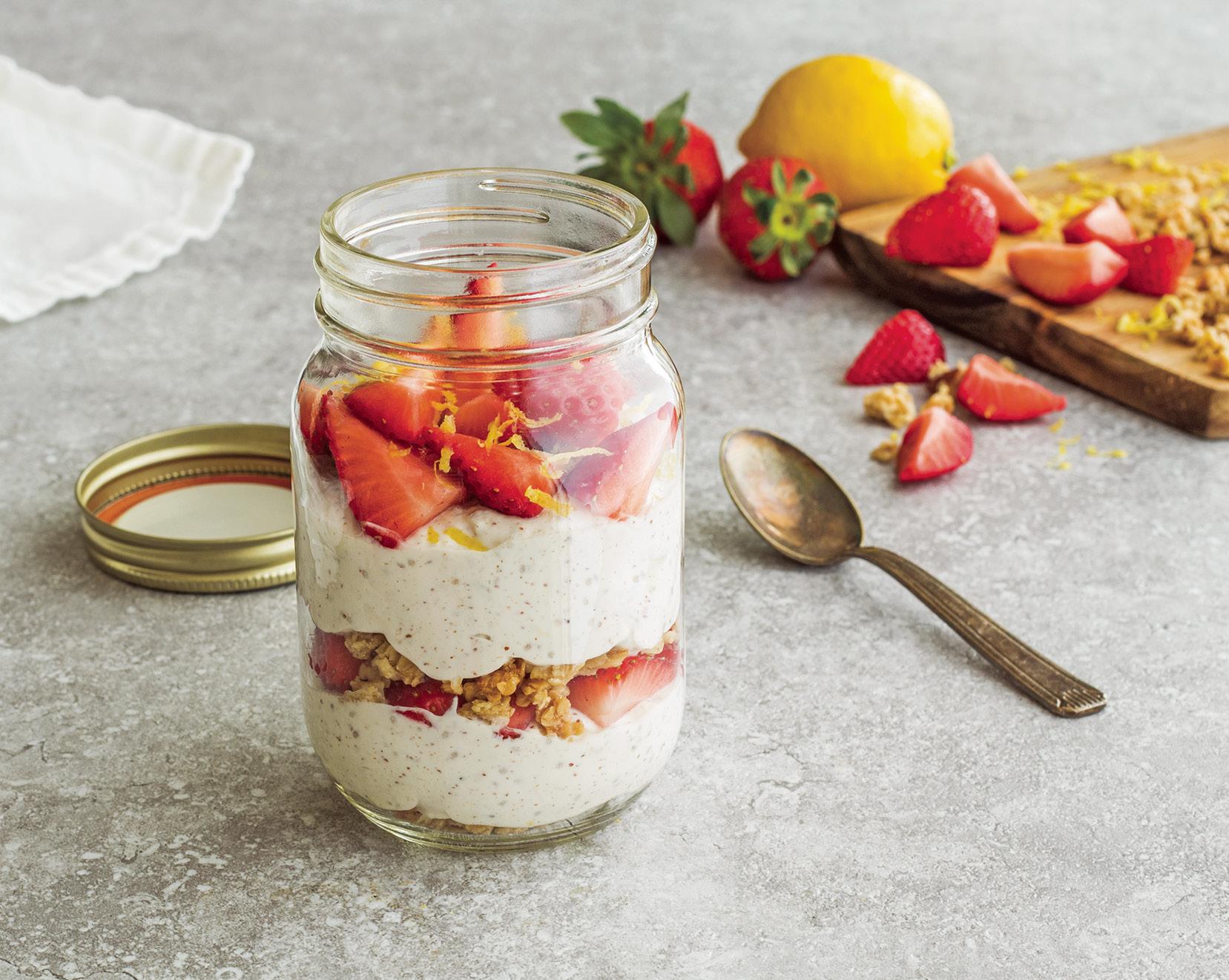
As parents, maintaining high energy levels is crucial to keeping up with the demands of family life. By prioritizing your own health through a spring cleanse, you are better equipped to care for your little ones. Increased vitality and mental clarity resulting from a cleanse can positively impact your interactions and overall family dynamics.
Understanding the time constraints parents face, incorporating mindfulness during a spring cleanse can be simplified. Beyond dietary changes, incorporating mindful practices into your routine enhances the holistic approach to spring cleansing. Taking a few moments throughout the day to breathe deeply, promotes relaxation and stress reduction.
Prioritizing adequate sleep also plays a crucial role in supporting your body’s repair and regeneration processes. Additionally, incorporate the benefits of walking, using short strolls to enhance mental clarity and physical well-being.
As we welcome the rejuvenating spirit of spring, let’s extend the concept of renewal to our bodies. Take a holistic approach by eating nourishing foods, staying hydrated and adopting mindfulness practices. By investing in your wellbeing, you’re not only doing good for yourself, you are also creating a dynamic and energetic environment for your family.
Try this easy and nutritious breakfast recipe to start regaining your energy today!
Strawberry Parfait
15 minutes 2 servings
1 cup plain Greek yogurt
1 tbsp chia seeds
2 tbsp almond butter
1 tsp maple syrup
1 tsp lemon zest (plus more for garnish)
1⁄4 tsp vanilla extract
1⁄2 cup granola
1 cup strawberries (chopped)
In a small bowl, mix the yogurt, chia seeds, almond butter, maple syrup, lemon zest, and vanilla extract.
To assemble: Add half of the granola into the base of a cup. Add a layer of half the yogurt mixture, followed by half of the strawberries. Add the remaining granola on top, and finish with the remaining yogurt and strawberries.
Top with more lemon zest, if desired. Enjoy!




Isabelle Bulota is a registered holistic nutritionist, recipe developer and food photographer, passionately navigating the challenges of motherhood with two vibrant teenagers. As the proud founder of SuperBorn, she guides women on their pregnancy journey through personalized nutrition counseling.
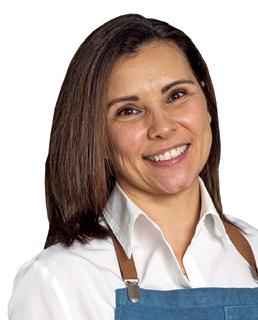
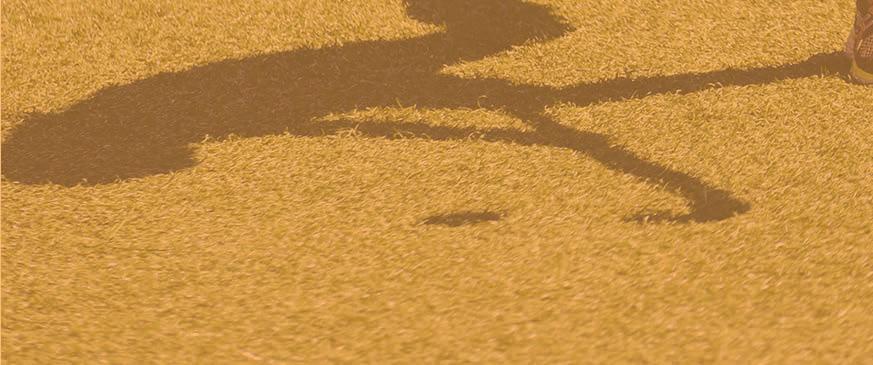
Glenlyon Norfolk School is offering a variety of fun summer camps for students age 3 to 17. Arts, cooking, baking, field hockey, day camps, kayaking and more — our summer camps offer something for everyone!

Look up! Look waaaay up!
Can you see any very large, dark birds flying high in the sky? Maybe just a few, maybe lots?
Two of the most common raptors you can find on Vancouver Island are bald eagles and turkey vultures. If you look carefully, even without binoculars, you might be able to tell them apart!
Young eagles appear a little bit bigger than their parents because their first feathers grow in very quickly and are a little longer than the adults’. Overall, they are brownish to black, with a range of white mottling and streaks. Young bald eagles start out brown, and for the next few years, as they molt their feathers, go through various stages until they
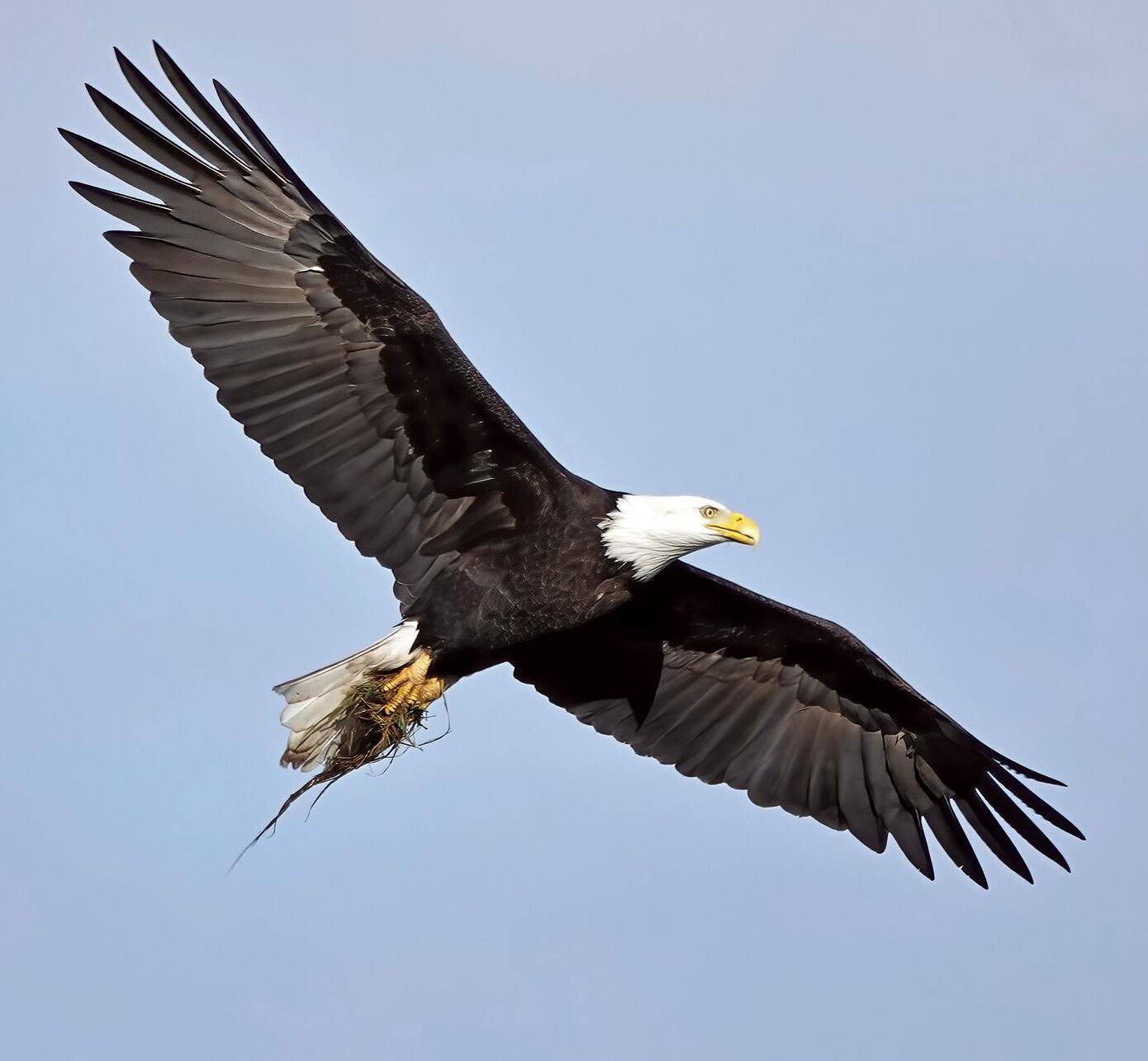
The bald eagle is the most common eagle you will find on Vancouver Island. By the time they are about four to five years old, they will have a large white head and white tail. Did you know that “bald” comes from an old English word that means white? An adult bald eagle’s head isn’t unfeathered; it’s white!
have their fully white head and tail. In the meantime, they will have brown and white mottled bodies, head, tail and wings. If you see an eagle with white feathers in the wingpits, you are looking at a young bald eagle. They can also have dark feathers in the wingpits, so only the white ones are helpful for identification.
Bald eagles can be seen just about anywhere on the island but are most often found around the waterfront or near agricultural areas where they will catch gulls and waterfowl to eat. They are also scavengers and can be found near landfills and transfer stations. They often catch fish, and many gather at Goldstream Park in the fall to feast on the salmon there. If you see two adult bald eagles sitting close together, they probably have a nest in a nearby tree. The stick nests can be more than three metres across and two metres deep!
Bald eagles fly with their wings held straight out to the sides when they soar. They have a direct and often fast flight. When they fly over a beach or field, many of the ducks and gulls will take flight. If you ever see the birds on a beach or on the water take off all at once, look to see if you can find an eagle flying over or chasing them!
Turkey vultures are about the same size as bald eagles, and can be easily mistaken for young eagles at a distance. They have mostly unfeathered heads which are black when they are young and red by the time they are one year old. While bald eagles nest in trees, turkey vultures nest on the ground under fallen rocks and trees.
Turkey vultures are almost exclusively scavengers. They will only eat dead (or nearly dead) animals. As such, they can usually fly over flocks of ducks and gulls without flushing them. Occasionally though, a nervous gull or duck will sound a false alarm and cause the flocks to rise.
Turkey vultures are expanding their range northward. A few of them now spend their winters on Vancouver Island, but most migrate to Mexico and South America.
Turkey vultures are great at soaring, but not very good at flapping. They hold their wings up slightly in a “V” when they soar. Think “V” for vulture to help
remember this identification hint! This also causes them to teeter back and forth a little bit.
Every fall, migrating vultures gather along the southern coast of the island waiting for the conditions to be right

to cross over the Juan de Fuca Strait. Hundreds of them can be seen flying in circles over rocky hilltops in places like East Sooke Park and Metchosin. They will spiral higher and higher in the sky until they think they have enough height to soar over to Washington State. This upward spiral is called a “kettle.” If they discover that they weren’t high enough to cross, they will turn around and try again. Once they have crossed, we won’t see them until the spring.
These species, and other raptors, can be seen migrating north in the late winter and spring, and south in the late summer and fall so keep looking up!
Ann Nightingale is a long-time volunteer, community presenter and bird-nerd with Rocky Point Bird Observatory. In 2024, RPBO is celebrating 30 years of migration monitoring and bird conservation. Learn more at rpbo.org.





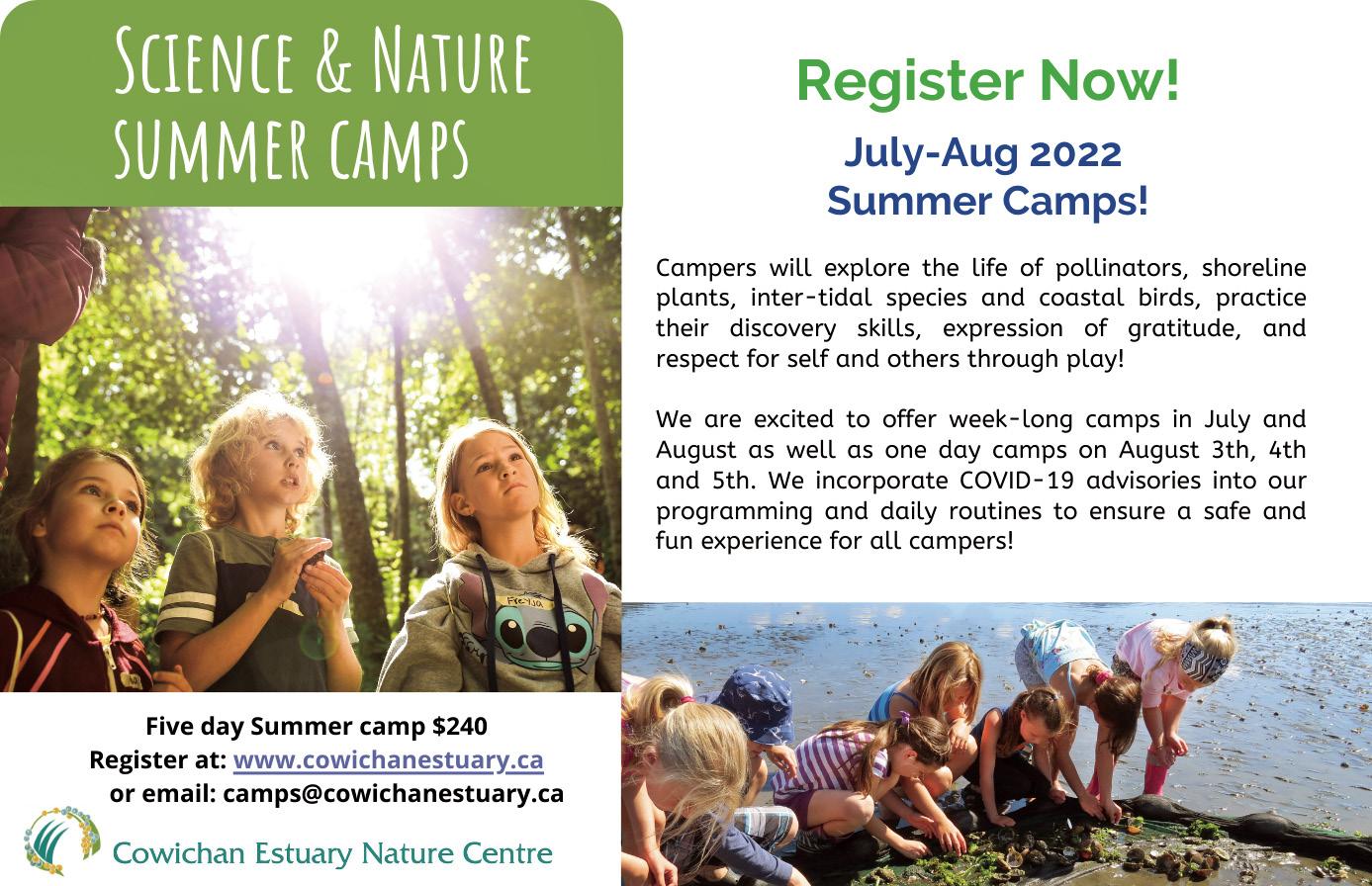

Mark Saturday, May 11 on your calendar so you don’t miss the Toys on the Island Toy Show at the Campbell River Community Centre from 10am to 3pm. With over 130 tables of collectables and every toy, comic, sports card and video game you can imagine, this is a must-see event. Bring a non-perishable food donation for a chance to win some incredible door prizes. vanisletoycommunit.wixsite.com/toys-on-the-island

The Thrifty Foods 124th Victoria Day Parade is on Monday, May 20 at 9am. While it will be broadcast on Chek TV, there’s nothing quite like watching it live as it heads down Douglas Street in Victoria. See bands from all over Canada and the US, enjoy short performances from local dance studios, cultural centres and other community partners. Be mesmerized by all the work put into the many floats by local businesses. gvfs.ca
On Friday, April 26 between 7 and 9pm, grab the entire family and head to the Cowichan Aquatic Centre for an everyonewelcome Rock ’n’ Roll swim! Listen to rock and roll music, have fun with all the amenities in and around the pool and watch for exciting games and prizes offered throughout the evening. General admission rates apply. northcowichan.ca

Local Victoria magician Jason Verners joins veteran Canadian comedy magician Chris Yuill for what’s sure to be an incredible performance at the Port Theatre in Nanaimo on the evening of Friday, April 12. This family friendly show is sure to leave you wondering how these two award-winning performers pull off their amazing tricks and illusions. Hurry and get your tickets, they’re going fast! porttheatre.com
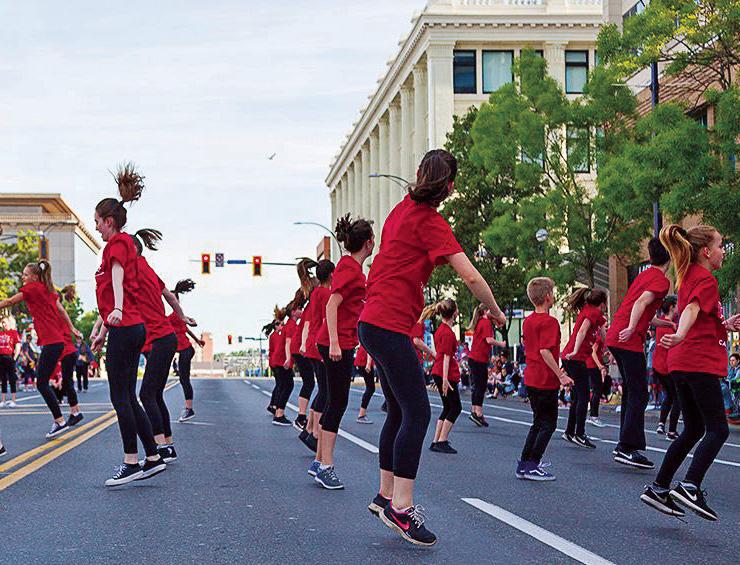
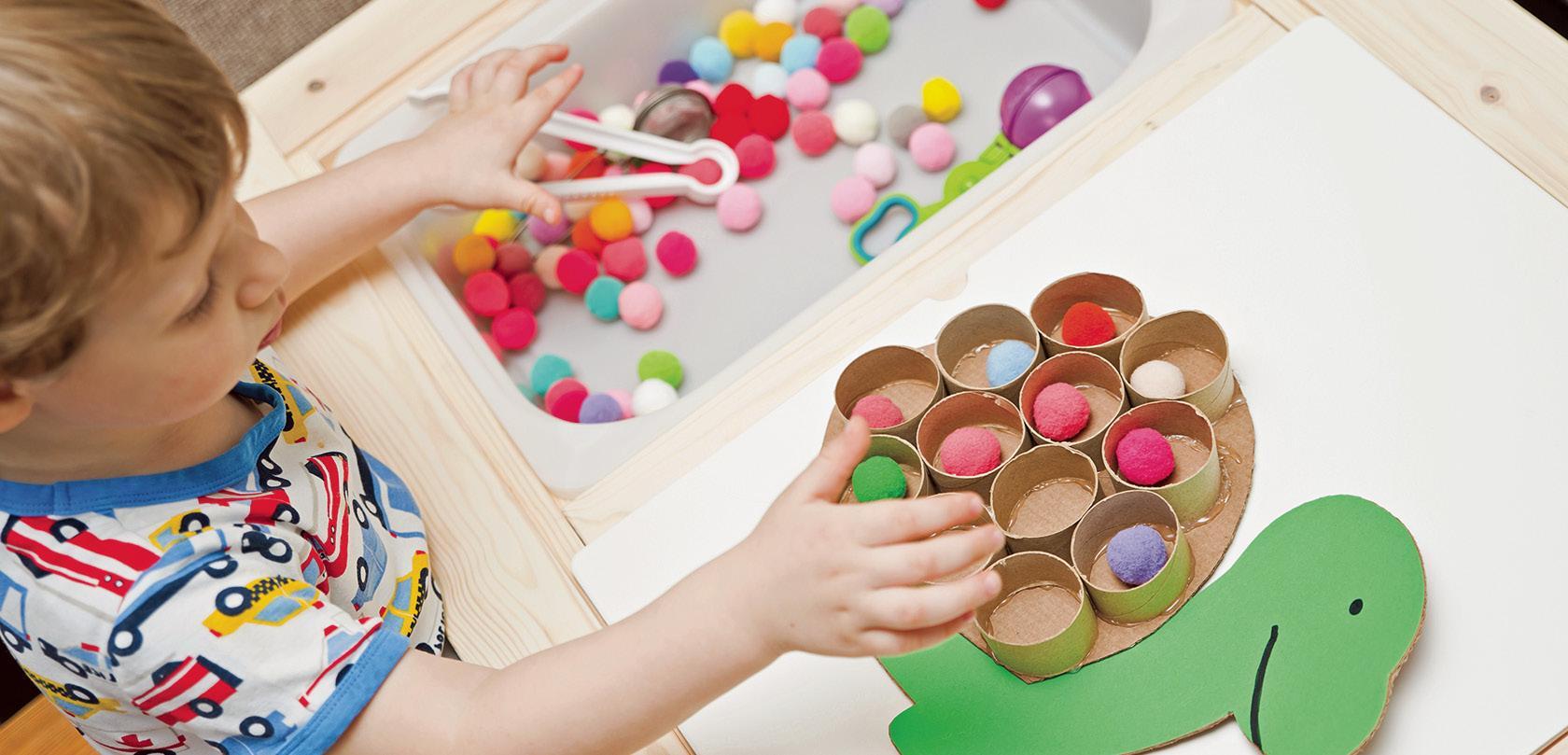

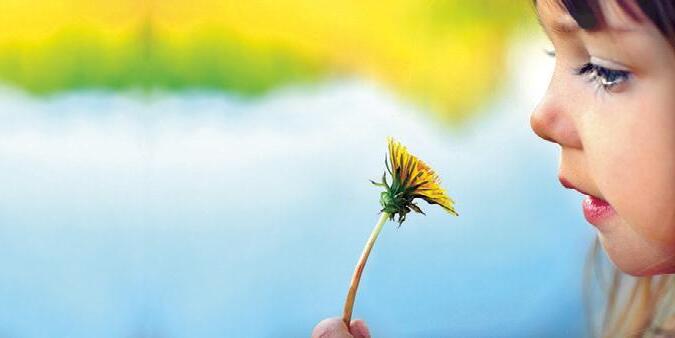
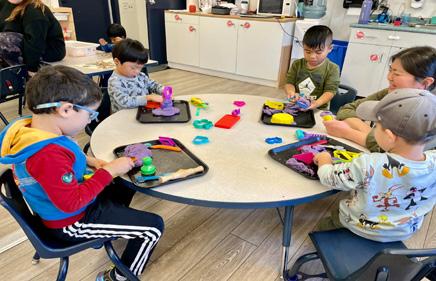




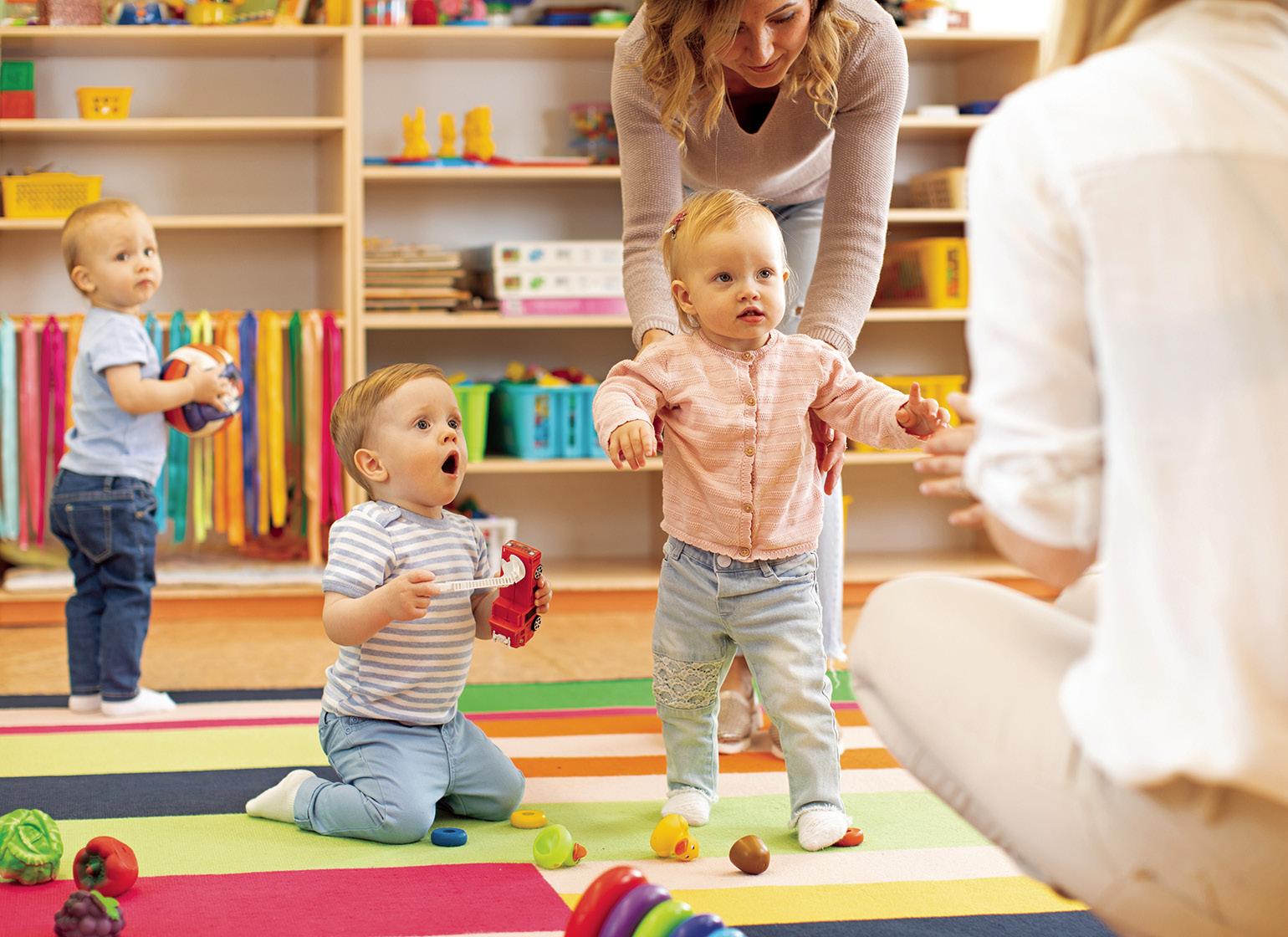
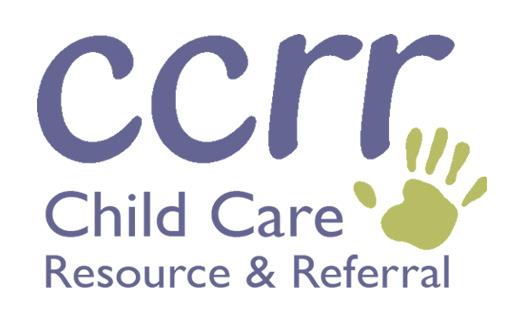

“I’ll hold your hand mommy. It can be scary to walk across the net. Try not to look down.”
I bend over sideways to hold my five-year-old’s hand and awkwardly walk across a net 100 feet in the air, all while staring at the sky so as to avoid height-induced vertigo.
“We’re almost at the other side mommy! Good job!”
My husband took my daughter to the Malahat Skywalk for a Pro-D Day and she came back bouncing up and down.
“The slide is so fun! I was sad you weren’t there.”
So, we went again, as a family, so she could show me the cute wooden bear in the forest below the pathway, the amazing

view of the Salish Sea, the aforementioned “adventure net” at the top of the structure and, of course, the 20-metre twisty slide she raved about. I heard about the Skywalk slide. The slide she loved was one of the reasons I hadn’t visited the attraction yet. Heights and adrenaline are not exactly… my thing.
When we arrived, I saw that the slide started halfway down the structure.
“Oh that doesn’t look so bad,” I thought. Until we walked to the top, did several five-year-old-designed “challenges” across the net and waited in the long-weekend-sized line up listening to people scream as they went down the “so fun” slide.
My husband offered to hold our spot in line while we headed down to the playground, a welcome distraction and a chance to release a nervous pee. The mood at the bottom of the Skywalk was festive: there was a band, a campfire, hot dogs and ice cream for sale.
My daughter had a great time climbing on the beams on the playground. Then I got the text from my husband that it was
almost our turn, and we ran up, my daughter giddy with excitement and my heart pounding.
I looked over to the sign “If you are uncomfortable in confined spaces or rapid tilting, you should not participate in the spiral slide.” The words “YOU WILL SLIDE AT HIGH SPEEDS!” were highlighted in all caps. I couldn’t exactly plead ignorance now.
I asked to go first to get it over with. My daughter coached me saying “this is amazing yay yay yay!”
I practiced my mantra in line. “This is amazing yay yay yay. This is amazing yay yay yay.”
“Okay,” I thought to myself, “If I say that line, I’ll be down by the time the phrase is complete. It’s only supposed to take eight to 10 seconds.”
I sat down at the mouth of the metal tunnel, placed my feet in the mat, and scooted myself down the descent as my daughter cheered from behind “Go mommy!”
As I sped down the slide, I repeated her mantra. “thisisamazingyayyayyay, thisisamazingyayyayyay, thisisamazingyayyayyay.” I was still not down. How many times would I have to repeat this phrase? “…thisisamazingyayyayyay, thisisama..”
The light opened above me, and I looked up relieved at the attendant beside me.
I had done it. I made it down the slide. I hopped out and pulled out my iPhone, ready to capture my daughter eight to 10 seconds after my exit. I caught her exhilarated smile as she hopped out and gave me a hug.
“That was so fun! You did it mommy!”
“Let’s film dada now,” I suggested.
We both crouched down at the base of the slide and turned on video mode to record dada’s “whoaoaoaoaoaoaoaoaoaoaoaoao” all the way down.
“Ice cream!” my daughter yelled as she ran off to the concession. And my husband and I trailed behind at our glacial adult pace.
“Yeah, next time I’m walking down,” I muttered under my breath.
Sometimes it’s hard to know what lessons to teach our kids. Should I have taught her to listen to your gut and not have tried the slide? To follow directions by obeying the sign and its warning that it was not meant for people like me? Was I right to show her that going outside your comfort zone is sometimes worthwhile?
That day, I decided to put on my big girl pants, take a deep breath and join in my daughter’s excitement. To do something I never would have done without her insistence and kindergarten-aged coaching. I took the leap and slid into fun.
Julia Mais is a policy and communications professional in Victoria. She looks for beauty in the everyday through writing, photography and the outdoors. She lives in a messy, cheese-filled home with her husband and preschooler.
